#classic tragic love story at it's finest
Explore tagged Tumblr posts
Text








A Classic Tale of Tragic Romance
The play All for Love or the World Well Lost was penned in blank verse by English poet and playwright John Dryden (1631-1700) in 1677, a significant work for Dryden and a notable contribution to the genre of heroic tragedy, with many scholars considering it one of Dryden's finest works. Our copy is from an edition printed in London for Jacob and Richard Tonson in 1740 (although the handwritten information on the paper wrapper says 1750).
The play is an acknowledged reimagining of Shakespeare’s Antony and Cleopatra, which focuses on the last hours of the lives of its hero and heroine’s tumultuous relationship. Set in Alexandria, Egypt, the play follows the tragic love story of Marc Antony and Cleopatra, queen of Egypt, as they struggle to overcome political intrigue, jealousy, betrayal, and their own personal demons. The play explores themes of love, honor, duty, and the struggle between reason and passion. Ultimately, the play ends with the tragic deaths of Antony and Cleopatra, who choose to die together rather than live apart.
John Dryden was an accomplished English poet, literary critic, translator, and playwright, and in 1668 became the first Poet Laureate of England. He stated that writing this play was his attempt to reinvigorate serious drama. Dryden's play, with its exploration of complex themes and its reimagining of a classic work, was a bold and innovative contribution to the theatrical landscape.
The Tonson publishing firm was a powerhouse of London publishing for nearly a century. It was founded in 1677 by Jacob Tonson the Elder (1655-1736), who formed a close association with Dryden, publishing much of his work in the final decade of Dryden's life. In 1709, Tonson secured the publication rights to Shakespeare's works, and a year later, in partnership with his nephew Jacob Tonson II (1682-1735), he moved his shop to Shakespeare's Head in the Strand. The Tonsons' signature emblem was a small woodcut image of the Bard, commonly found on their title pages as seen here. The Tonsons listed as the publishers of this booklet are the elder Tonson's great-nephews, Jacob Tonson III (1714–1767) and Richard Tonson (1717-1772), the last of the Tonson publishing clan.
View other Classics posts.
-Melissa, Special Collections Classics Intern
#classics#ancient egypt#roman#cleopatra#Queen of egypt#marc antony#cleopatra vii#tragedy#john dryden#All for Love or the World Well Lost#doomed love#tragic ending#shakespeare#lovers#love#antony and cleopatra#Jacob Tonson#Richard Tonson#plays#melissa
30 notes
·
View notes
Text
My Top Looney Tunes/Merrie Melodies Cartoons That Might Make You Think Twice About L'amour... With the most overrated and overly commercialised traditional lovey dovey holiday just around the corner, what better way to laugh it off with some WB classics? Looney Tunes and Merrie Melodies have provided us with some hilarious laughs in many ways, romance included. But...love is not just a beautiful thing! Nope! Love sucks! And I'm pretty sure Looney Tunes will tell us so with it's tongue in cheek to dark and tragic humor. I SHAN'T be including any specials, so no Bugs Bunny's Valentine, or anything after the goldenage, I'm only focusing on the classic theatrical shorts. If WatchMojo dare touch on this and copy my list...ooooohhhh willl I blow my stack!?!?! LOL So, before you think twice about bringing out the finest wine, expensive champagne, flowers, chocolates, your best formal wear, rose petals on the bed, candles burning, soft music playing in the background and doing your best Charles Boyer/Pepe Le Pew impression with a red rose between your teeth playing smoochy face and dancing with a striptease to It Had To Be You, these cartoons may make you change your mind on what love is...or just straight up make you laugh, shrug it off, yet still poo-poo the holiday all together! Whatever tickles your fancy! With that being said, here we go. Sit back, relax and enjoy this read, just make sure your wardrobes are locked, or else Bugs Bunny will be trying on ladies clothes! (KEEP IN MIND: SPOILERS, also keep in mind, this blog post is meant to be humorous. Also this blog is no targetting the LGBT community.) Porky's Romance- Frank Tashlin, 1937

Well, there's flowers, there's candy in a heart shaped box, there's a proposal and there's...the stuck up girl who gets what she wants (dang, Petunia was a total...sow in her early days). This cartoon was notable for several things. Petunia Pig's first appearence and Joe Dougherty's final time playing the voice of Porky Pig. The poor guy's stutter caused so much time in the studio that it got expensive and he was let go. Such a sad and bitter end to his career. Porky's Romance is definitely a cartoon for those with some questionably dark humor, no? When Porky proposes to his love interest Petunia, she snobbily turns him down...(love hurts, whether it's right or wrong), poor Porky's heart is broken to the point where tears stream down his cheeks and he decides to end his life...ouch, such a grim time for WB cartoons. Mind you, this was before the time Bob Clampett put the "looney" in Looney Tunes that we all know and love today.
Porky's attempt backfires however when he's too heavy for the noose and he is knocked unconcious, causing him to have a rather unpleasant dream on what married life would be like. While this isn't the most pleasant of Looney Tunes cartoons, it does kind of feel like a cautionary tale on those who are not ready to settle down and have kids. Not saying everyone will grow up to be fat, lazy and a glutton like Petunia in the dream sequence, but settling down with your spouse will change your life forever, especially IF you have kids. It's not one to be taken light-heartedly, but it does feel like a satire on what married life can be. Either way, love is a complicated feeling for some and when/if you're not ready for it, best stay away from it. Not exactly my favorite cartoon but it's still worth a mention.
Muscle Tussle - Bob McKimson, 1953
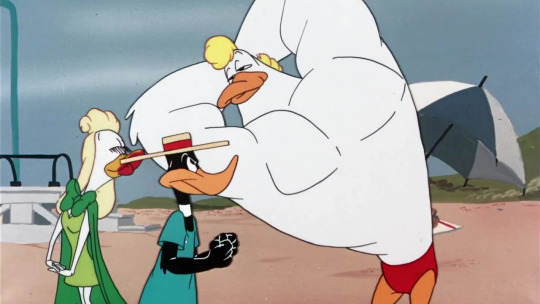
Poor Daffy Duck...can't he ever get the time to settle down with his girlfriend Melissa? Sometimes you can't help but feel sorry for him, just because someone has more muscles and a killer body, doesn't mean they're perfect, right? Alas, this is Looney Tunes and it's all done for laughs. This is another typical "she's my girl" story, I'm pretty sure a lot of cartoons have done this trope, sure, not all Daffy Duck cartoons land, but when they do, this isn't one of them.
Lovelorn Leghorn - Bob McKimson, 1951

Trying to find your significant other half can be tough, especially when others tease and jeer. In this case, Prissy. Poor old Prissy, an old fashioned Spinster hen just wants to settle down with a rooster to call her own. If you've never been lucky in love, then I'm sure you can relate, but at the same time laughing at this cartoon.
Ding Dog Daddy - Friz Freleng, 1942

Another cartoon that is kind of mixed for me, but none the less a rather bittersweet cartoon. This cartoon centers on a yellow/orange dopey dog Goofy (say, why hadn't Disney filed a lawsuit huh?) is out enjoying the lovely spring weather complimenting to the audience how beautiful love is. After failing once to court a dog who turned him down and even mocked him, he eventually falls for Daisy. The only catch is, poor Goofy is smitten over a metal statue shaped like a dog. Complete wtih lightning strikes with every kiss and a vicious bulldog chasing him around the garden and yard to boot, you really feel for Goofy. To really add fuel to this cartoon, Daisy is then carted off to be melted into scrap and then turned into a bomb for the wars. Hearing Goofy call out Daisy's name and then having her reeled into his paws really is soul crushing. As Goofy mourns over her changes, he gives her one last kiss...and...Goofy's still smitten and happy....phew! I thought something tragic was gonna happen but ouch, still pretty soul crushing.
Still, a bittersweet ending as Goofy doesn't shed tears straight after. TRIVIA: Goofy was voiced by Disney legend Pinto Colvig (who also happened to voice...Goofy, as well as Grumpy from Snow White and the Seven Dwarves). The Hep Cat - Bob Clampett, 1942

From dippy dogs to confident cats that are self proclaimed hunks, this is a great cartoon. Definitely one of Clampett's finest. A suave, charasmatic cat is girl crazy and is on the search for the perfect mate. After being given the cold shoulder by a lady cat, a dog called Rosebud toys with the cat, using a puppet that resembles the one who turned him down. The Hep Cat's reactions and exlaimations are priceless and performed perfectly by Mel Blanc as always. The delivery of the cat's lines are fantastic and who can forget the line "Something new has been added!". Throw in some rather smooth L'Amour scenarios and gags, and you have got yet another cartoon that makes you want to forget about love and just enjoy the laughs. But remember this, sock puppets aren't sexy! But to quote the Hep Cat: WELL I CAN DREAM CAN'T I?
What's Opera, Doc? - Chuck Jones, 1957

Okay, I'm kind of cheating here, there's not really any romance here but...it's a Bugs Bunny cartoon! He dresses up as a girl, he fools Elmer, leading him into a beautiful part de deux, Bugs doesn't just get into the act. He's still practically playing hard to get to the helpless oblivious Elmer. Everyone's seen this cartoon! It's hailed as a masterpiece and has been crowned the "Greatest cartoon of all time". "Kiww the wabbit" has become somewhat iconic as the rest of the cartoon, nearly every line is sung and there is not one sign of slapstick, pretty unique for comedic Looney Tunes short with an operatic outing.
While in my opinion, I'm not a massive fan of this cartoon, I don't hate it, but I do appreciate it, it's gorgeous backgrounds, sweeping usage of Wagner's music and rather dramatic flair, this cartoon has it all, tragedy, drama, comic-opera and beauty, as well as a faux romance between Elmer Fudd and Bugs Bunny..
While not the most lovey-dovey of cartoons on this list, we still get a wonderful duet sung by Elmer and Bugs, performed by Arthur Q. Bryan and Mel Blanc. Don't ask! If you've seen enough Looney Tunes cartoons, you'll understand that Elmer isn't always bright when it comes to telling a wascally wabbit and a beautiful woman apart. The poor guy never catches a break since he clearly is a gentleman. Probably just timid but waiting for the right move. See Rabbit Seasoning for example...but then you realize that is Bugs Bunny in disguise! LOL Return My Love, sung to Wagner's Tannhäuser Overture is something remarkable, yet silly. We get what feels like the most romantic moment in any Looney Tunes cartoon ever, with the camera going back and forth to Elmer climbing the stairs and Bugs lying on a bench under a beautiful set of pillars, batting his newly added lashes to one fine embrace. Despite being a parody, it does have what all operas have...a downer ending. No anvils, no outwitting smart alec remarks from Bugs, just rushing down the stairs after his headress came off, nothing but one big dramatic outcry of terrifying natural disasters summoned by Elmer's magic helmet. To make it more dramatic, Bugs looks back, maybe that's why he was killed!?!? Overall, another beautifully tragic cartoon. ANYTHING or almost ALL of the Pepe Le Pew cartoons - Chuck Jones, 1945-1962

Wait who? Oh yeah! *snerk* How can I pick just one? All but one Pepe cartoon scent-re round the same thing...chasing a helpless she-victim that has somehow gotten her coat into a white stripe coating. Pepe really needs to go to Specsavers, was that a thing in the 40s to the 60s? LOL Pepe, a suave, calm French skunk, always the helpless, hopeless romantic hopped onto the scene in the 40s, with his smooth expression, sexual desires and...now sadly, controversial character traits, he wasn't the favorite, or was he? You decide! Winning an oscar for For Scent-imental Reasons, he had gone on to star in almost two decades worth of cartoons. With a calm suave flirtatious demeanour, sexual, lustful desire and...err...habit of not bothering to properly introduce himself, shake hands/paws with his chosen target and give'em time to reply, it's no wonder they (or mostly in this case, Penelope Pussycat) had been running from him...or could it be that he's the obvious...a skunk! This horny striped cassanova never gave up, unless somehow the plan backfired (which was occasionally). Despite all his failures, Pepe Le Pew cartoons prove that...love stinks. Hare Trimmed - Friz Freleng, 1953
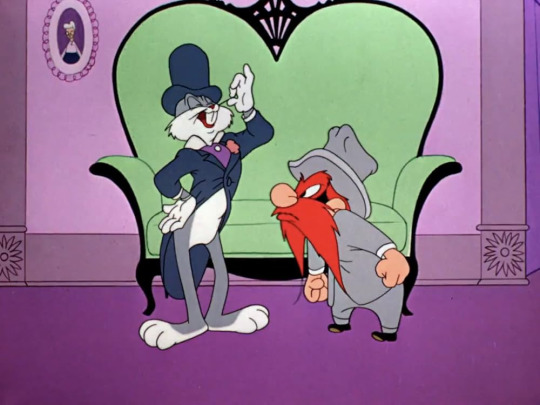
From skunks with French accents to...err...Bugs Bunny putting on a French accent, it really is the sexiest accent...or that's what the heck they say haha! YOU DECIDE! NOTHING TO DO ME WITH MOI! BTW On a site note, was there anything Mel Blanc could NOT do? Any voice? Any accent? Any vocal range? God bless this man! When Yosemite Sam learns about a local widow inheriting a fortune, his selfish greed decides to take advantage on the lady, much to her giddy delight, she accepts, little does Sam know that Bugs (disguised as handsome man? SHOCK! NOT A LADY FOR ONCE?) steps forward to try and save the poor widow from Sam's clutches. Emma (who is actually Granny) is delighted to have a suitor, but she can only choose one. With lots of funny gags, mischief and yes...later on, Bugs going from a sexy French gentleman to Granny in disguise...to a bride, this will make you think before you decide to marry when you are filthy rich. Also where does Bugs get all his lovely clothes? LOL Rabbit Romeo - Bob McKimson, 1957

Before Bugs was seeing twinkly hearts and curvaceous girl bunnies with sultry figures, he was met face to face with Millicent, a rabbit with a thick Slavic accent and a rather large bulky and unattractive phsyque. Bugs was never one to settle down with a girl of his own in the golden age. He has cat called and wolf whistled lust over Lauren Bacall, chased mechanical and robotic bunnies on race tracks and into castles, even went out with Witch Hazel in bunny form! Does Bugs really need a girlfriend? After all, he is the one who wears the err...dress? Given to Elmer Fudd as a present by his uncle, Millicent broke down in tears and trashed the house due to loneliness, so Elmer set off to find the perfect mate to calm the destructive doe down. That's where Bugs Bunny comes in and, who would have guessed? He's repulsed by her hagged appearence...poor Millicent, she just needed a mate. The rest of the cartoon writes itself, but no matter how you look, don't treat them as if they were Quasimodo.
HONORABLE MENTIONS...or DISHONORABLE? LOL Love and Curses - Ben Hardaway and Cal Dalton, 1938 Holiday Highlights - Tex Avery, 1940 I Got Plenty of Mutton - Frank Tashlin, 1944 Hare Splitter - Friz Freleng, 1947 And finally...MY PICK for the number 1 cartoon to get you in and or out of love is... The Stupid Cupid - Frank Tashlin, 1944

WHERE do I begin with this cartoon? It is overlooked, outrageously funny and directed by the ever so underrappreciated Tish Tash. This cartoon either screams Valentines Day or screams stay away from ze love! A mischievous cupid (Elmer Fudd?) makes his rounds hoping his arrows strike two and two together. With some rather risque adult jokes, fantastic animation and Daffy Duck at his...horniest, this is THE ultimate Valentines Looney Tunes cartoon to watch and either appreiciate or avoid. The expressions on Daffy's face in this short are just straight up brilliant, the moment Cupid's arrow strikes him and he spots his target, we get some of the most bizarre and unseen Daffy like never before. With a cheeky wriggle of his eyebrows, a sneaky glance at the camera, a cheeky grin and some outrageous clicking of his cheek, Daffy Duck is more than just crazy, he is crazy in love. Unfortunately, this cartoon feels incomplete as the original ending is completely lost. It is said that Daffy was originally going to end the cartoon with a rather cheeky, raunchy line that was way too saucy for the WB executives. Daffy was supposed to utter: "If you haven't tried it, don't knock it." There is no doubt about it, The Stupid Cupid is hands down one of the funniest and most outrageous cartoons to watch during Valentines Day.
With that being said, what are your thoughts? Your favorites? Before time goes by, have a happy Valentines and don't eat too much chocolate! Stay safe, happy, make sure your loved ones are happy and ...don't overdo the mush, okay? That's all folks!
#looney tunes#daffy duck#warner bros.#bugs bunny#classic#porky pig#foghorn leghorn#yosemite sam#elmer fudd#l'amore#romance#valentines day#merrie melodies
3 notes
·
View notes
Note
Listening to women love power course and it dawned on me Chris is the classic hades and Persephone pairing.
Hades (Chris) and Persephone (Alba) pairing. An emotionally dark man who wants a younger woman that will not put him to task like an emotionally mature women.
Expect it to last until She gets to her Queen phase.
That myth is so tragic and dark. Still an epic story, but dark nonetheless. I do love how the tale embodies death, rebirth, and transformation—Scorpionic energy at its finest.
When do you think the Queen Persephone phase will happen, anon?
0 notes
Text
Alright. Now that the frugivorous primate that exists within us all has been sated. It is time to talk. This will be a long post.
We can start by looking at Boromir as he is presented in the text. Something of a classically tragic hero. Driven by honor and duty, who succumbs to greed and/or desire in a moment of weakness, driven by the same traits that make them a hero to begin with. You see this all over Tolkien's writing. Great men, great ambition, great falls. Those that are humble and kind before they are great and terrible, if they are great and terrible at all are what results in the triumph of Good over Evil.
Boromir fits this archetype perfectly. He is in effect a Perfect Prince. Never mind the fact that his line is that of the stewards. Denethor is in effect king, and Boromir is in effect the heir to that throne. He is everything he should be. Beloved by his father, beloved by his people. Strong, handsome, charismatic, confident. Hearty in body and spirit, loyal to Gondor and its people. Just and honorable. Willing to do anything to protect it, and willing to sacrifice himself to do so.
And on the eve of war, a war that of all men save the Rightful King he is best qualified to lead.. he treks north in search of salvation. This implies things about how he feels. About his role as Prince. What value he can bring to Gondor in a time of strife. He feels he is best served trekking across the continent, chasing after visions. What a strange thing for the Perfect Prince to do.
He arrives in Imladris, after many months. For a council to decide the fate of the one ring. He suggests in ignorance of its nature and in hope for Gondor's safety, that it might be turned against its master. It is explained that that is a trap, and exactly what that master wants. He accepts it, accepts that it must be destroyed, and commits himself to its destruction. He is ambitious and daring. Steadfast, bold. Good-hearted, and with wisdom enough to accept his ignorance. A great man.
And the fellowship goes on its way, and he proves his skill in combat. He butts heads with others, but time and time again he gives way to the experience and wisdom of others. He understands the perils of the ring. He understands its danger. He is not arrogant. He is not foolish. He is willing to listen.
It seems strange, then. That he would seek thereafter to seize the ring and use its power for Gondor. Of course one can say that the temptation of the ring is great. That those with ambition are most vulnerable to its whispers. And you might leave it at that, as Boromir regrets his actions as soon as they transpire. A moment of weakness in the face of the ring. A failure that would break the fellowship, and lead in time to his death.
And in the after, he seeks to save his companions, and fights to his last breath to do so. Standing valiantly to the last. Speaking of failure and regret and a wish to protect his kingdom, even as he drew his last breaths. Such is the tale of a tragic hero, brought low by a flaw that was his strength. Nobility without question, but in the end but a man.
Let me tell you a story. About a little boy born into expectation. Expectation to be an heir. Expectation to be a warrior. Expectation to be a leader. Expectation to be a man. And not just a man, but a prince. An exemplar and an ideal. This little boy is given the finest tutors in statecraft and combat and history and all the things a ruler needs. He learns of the rulers of ages past, of how their deeds have safeguarded the kingdom, and how upon their shoulders the kingdom rests.
This little boy has a brother, who he loves with all his heart. His brother looks up to him, and sees him as a role model. When his mother dies, and his father becomes cold, it is upon his own shoulders the responsibility of raising him lies. Five years makes all the difference. And it is the little boy's duty from age ten on to care for his brother.
The little boy has fleeting thoughts. About dresses, and soft skin, and the warmth of his mother. They become more prevalent as he matures, and a sadness overtakes him. But his little brother comes to see what is wrong, and the boy cannot bear to be anything but the perfect son, and the perfect prince. So he pushes it aside, and dives into that role. He suppresses all of those thoughts and those urges. Fleeting glances at the ladies of the court are just the tendencies of a young man. It is natural, of course, for him to feel that attraction. There is no ache in his heart. He has always felt like this.
He has a tryst with a young lady his age. Nothing serious. Nothing comes of it. He feels a wrench in his gut when she leads him to a lonely room, and he flees. They do not speak again.
He decides that there shall be no more of that, moving forward. Continues to build up the role of the Prince. Lives it. Breathes it. Believes it. He doesn't feel hollow. It is only worry for his people. For his men, facing incursions from the east. He becomes a captain of the kingdom by merit alone. A man beloved by all, and spoken of with naught but adoration.
When the dreams come, he feels a need to go himself. To set out into the wilds and make the trek alone. He is sorry to leave his people, but it must be him. He can't explain why.
He feels better, on the journey. Away from expectations. Away from the role of prince. Simply a traveler. He finds some peace in the solitude, and thinks briefly of remaining in the wilds. Away from it all. Where she can simply be alone. Those thoughts are quickly banished. Shoved aside. He cannot, should not, will not do such a thing. He has a role to play. He is the prince. And he shall not stray from the path.
He arrives at the place the dreams led him to. Discovers power. Seeks to use it for his kingdom. Finds that it is not so simple, and accepts that it shall not be. In its stead, and for his kingdom he shall join the quest to destroy it instead.
This power is a creeping, insidious one. Preying on desire. Reaching into one's mind and finding strings to pluck, to play you like a fiddle. The boy is protected by the Prince, and the Prince is nigh impossible to sway. It takes time, but the power finds a secret hidden away. The boy behind the mask. And the boy's desires hidden deep within. Forgotten, but not lost.
The Prince begins to feel desire for power. He knows its tricks, he has been traveling with a sage, and was there for the council that discussed its history. He understands this as a desire to use it for his kingdom, there could be no other reason. He holds steadfast. It shall not be done.
The sage dies to a demon of fire. The quest begins to fray, but the man he has been traveling with holds them all together.
The quest find shelter and rest in the home of a great queen. Beautiful, regal, powerful. Feminine in every aspect, but with the power and the wisdom the boy learned of in his youth. Like a storybook come to life. The Prince feels on edge around her. Repulses her grasping at his mind. He feels a need to protect and to safeguard, even though he has nothing to hide. The queen passes him by, and he seeks to leave as soon as he is able. No more of this place. Of a vision of what could have been unnatural power and presence. The witch has charmed him, the Prince is sure. A crack is left in the mask.
The quest continues on its way. They come to a place of power. Of far sight and reflection. Where one may see the world beneath their feet, stretched out below the hill it resides upon. The quest passed by a monument to kings past, earlier. It weighs on the Prince. He feels an ache. It worsens when he gazes out across the world, and sees his prison home. As fraught with danger and grief as the quest has been, she has felt more alive, more present in this world than he ever has before.
As he dwells on these feelings. Is confused by them. Tries to understand what they mean, he meets with the one who has been chosen to carry this power. And the Prince's sorrow, the power strikes. Visions, temptation. Of what could have been. Of a great queen. Of a solitary woman, peaceful in the woods. Of a life lived in good company, who see her for who she is. Of old memories, quashed. Of desires, denied. Of the hollow, constant ache and the promise of something more than a gnawing emptiness. The Prince does not shatter. For all that he is taken aback. He knows himself to be true to his kingdom. And though the boy is overtaken, and cannot help but grasp for the ring, the Prince is the one who understands the desire, and can only see it as a weapon against the enemies of his people.
As his friend flees from his madness, the Prince crumbles. She is faced with the whole truth, and cannot hide any longer. She hates herself. Hates how she wants to flee. Hates these horrible, perverse desires that betray every ounce of trust placed in her. A dutiful son. A loving brother. A father to his men. It cannot be. She cannot accept herself, and she cannot bear to return. But there are more pressing matters to attend to, such as the safety of the quest. She must account for her friend. She feels a knot of disgust in her stomach when she thinks of that betrayal. It doesn't leave.
She returns to camp. Lies to the leader of the quest. The truth is more than she can bear to say. Those remaining at the camp, for others have disappeared as well, decide to split and search separately.
She is alone when she finds two friends, in great danger. In her despair she sees a third option. A way out. She could fight through and fight out. She has led retreats before, and protected those who cannot fight themselves in the process. But would it not be a satisfying death? To protect your comrades. To lay down your life for something greater. And maybe she could at last find peace. She fights to die, in those last moments. She hates herself for her selfishness. For her abandonment of duty. She left rescue to her other friends, calling for aid with a horn she did not deserve. Her choice to die means her charges cannot escape. They are taken by the enemy, and she is left to die. Not in the heat of battle, but bleeding out and suffering. She finds it to be fitting. All she can think about as she waits to die is the brush of her beard against her hand when she raised horn to lips.
Even as the true heir to her kingdom, a king in waiting rushes to her side, she cannot but keep up the lie of the Prince. Let her memory inspire hope, not disgust. The words are ash on her lips. The secret is kept to the last, and she dies with the story of the Prince intact.
Maybe there is peace in the halls of Mandos, and whatever lies beyond.
Boromir Lord of the Rings is a trans woman. More on this later when I have eaten something. But the lit analysis brain has been cooking.
#while I will say that this is less a reading of subtext and more an interpretation through the lens of our experiences#she is nonetheless a woman in our eyes#it is a choice made to enrich our experience of the story#but it is no less true#boromir#lord of the rings#long post#transgender#transfem#literary analysis#lot of tags but I want people to See This
14 notes
·
View notes
Text
..."STAR-CROSSED LOVERS"??? YES.
Thank you so much @cheri-translates for translating Victor's SAND AND SEA DATE. You're an angel. 🥺🥺🥺
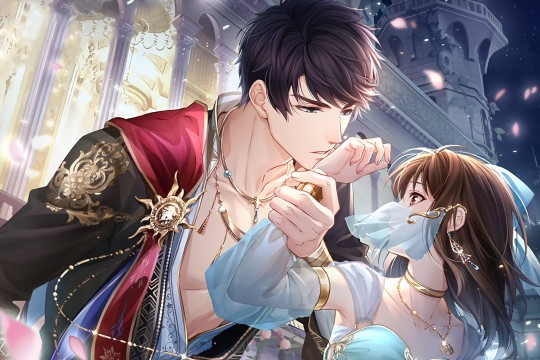
Now I'm gonna start blabbering since I've many feels about this date LOL~ 🙃
⚠️Warning: There are some spoilers regarding Victor storyline from the main story chapters that haven't been released in EN yet.
🌹
From "I won't save you a second time" [CH 1] to "I don’t need you to save me a second time." [The date in discussion]-- LOL as hilarious as this is, the irony.💯
Ngl this date felt like, the writers thinking since, under the context of the theme, the physical pain of time travel & crossing countless of dimensions & timelines is not possible-- let's just nearly kill him by spilling blood & dehydration but still we gotta nearly kill this man cause he wants to be in love.🙃
Idk why I'm getting so emotional LOL but there are so many call-backs I can remember on top of my head right now--
[The lines & moments from the date are indented & in bold letters.]
MC: "Victor, I’m helping you look for a water source. Let go!"
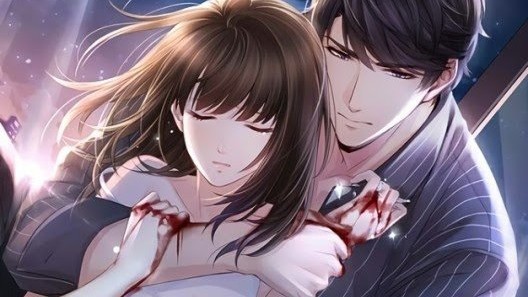
🌹 The sad broken cup scene from [CH 18-16], MC urging Victor to let go & him stubbornly refusing, until she gives in.
MC sacrificing herself to revive the river, part of it is to save Victor- other part of it is also for the greater good of the people in the city.
🌹 [CH 18-18] MC's monologue- "This time, put everything on my shoulder & let me be your hero one last time."
& sacrificing herself for the peace of the world even though it only made more chaos.
Victor releasing the hand that supported him at the edge & deciding to sacrifice himself with her. & the vow- "No matter what awaits you, I’ll be with you."
MC's monologue: "It turns out that no matter what the ending is, he’s willing to be with me."
[CH 18-28] Victor deciding to use the sundial watch one last time despite knowing that'd kill him for sure & might lead the world to perish as well. Dummy & Selfish in that moment. His final vow before MC disappeared, "No matter where you are, I'll always find you."
[CH 19-6 Dream World Victor route]
MC: "What if this really is a dream. Then what?"
Victor: "Then I'll turn it into reality."
[CH 25 phone call- In the Hospital]
"No matter what you are facing in other space-times...Wait for me."
[CH 36-10, after Victor returns from his 10K years time travel]
Victor: I thought you are never going to be afraid again?
His warm breath moistens my eyes. I inhale through my sore nose. Resisting the urge to bury my face in his chest, I look up, staring straight into his eyes-
MC: I will never be afraid again. Because you really came back. Victor is standing here before me like a treasure once lost and now found. What do I have to be afraid of?
Victor is stunned for a moment. The corners of his lips loosens a bit, while the contours of his face softened a lot. He raises his hand to wipe the wetness from the corner of my eyes.
Victor: It seems that this dummy has grown up a lot during this period. Listen carefully, I will never return to a world where you are not.
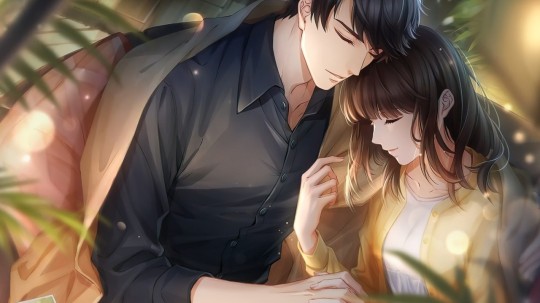
[CH 37 PV line]
"Whatever choice you make, I'll always be here."
[CH 37 karma by-line]
"I will accompany you on the road leading to the future."--
Basically the eternal insistence of him having an internal MC GPS tracker LOL ALWAYS being by her side.
Kidnapping incident.
🌹...[CH 30-7 to 30-10] Agio Street underground gambling den mission- wants to say a hello.🙋♀️
Abandoning the honor & glory of leading a comfortable life as a feudal lord to restore the river & to find the fateful couple, probably hoping to find his love too, but won't admit cause even if it's AU, he be like- "I'm still Victor" LOL
[CH 11 karma by-line]
"I won't let go of you & the world."
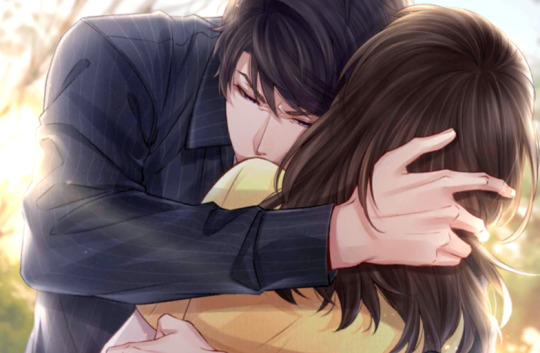
The physically-mentally painful exhausting wait & time travelling of 10K years, walking through endless dimensions & timelines, only to start from the very beginning every single time- hoping to find a way to save the world & protect the girl-- wants to say a hello too 🙋♀️
MC's monologue: Still, I want to have one more look at Victor… before leaving.
🌹 This specifically reminded me of a [CH 37-5 Victor split route] monologue from MC--
"It didn't matter what was waiting for me. I would face it with my head held high. Even so, I still wanted one last second...just one second. Let me call his name one more time...let me take a good look at him...just one last time..."
Victor: In that case, stay here. Stay by my side.
🌹 He has said the same sentence in different ways under various circumstances but one I can remember right now,
[CH 24-12 Black Cabin reunion]-- "But right now...Just stay by my side."
MC noting down how she always finds herself in his arms whenever she's fainting or getting in trouble. How Victor has been quietly taking care of her & protecting her. How the person before her walks in steady steps with forceful heartbeats.
When she was in her most depressing state [CH 18], he was there like the steady pillar of support, helping her in every way he could. He was pretty much the glue that kept her in one piece.
Again, in winter world, he stood by her side even as a stranger.
Not just these two incident, throughout the entire game, especially in the latter part of the story, they work together like partners, she learns to trust him with pretty much everything & they work through everything they can together.
Those few mentions in the date-- could be referred to how Victor has always been the constant source of warmth, encouragement, strength, support, protection in her life. No matter what world or when, he never really changes. He is still the same man. & His constant state IS choosing MC every single time.
Victor lies on the sand quietly, and it’s as though everything has returned to the beginning when we first met.
🌹 Indication towards how their storyline ALWAYS goes back to square one or comes in a full circle-- from Victor saving her from the car crash as a kid [& this being repeated many times afterwards, even in winter world], to the lightning incident [MC jumping in front of Victor both as a child & an adult], to both being in coma for week, staying in the hospital & taking care the entire time [MC in CH 11, Victor in CH 32], to stabbing each other countless times. [CH 18, CH 36-- & every other times Victor has seen those incidents happening before his eyes while time traveling.] *que tears*
🌹▪️▪️▪️▪️▪️▪️🌹
I could possibly make a full blown essay which I already kinda have out of some other specific call-backs I can remember right now. Specifically the theme of the date being star-crossed lovers-
Legend tells of two lovers. Because of the pressures of their nations, they could not be together, and decided to drown themselves in a river for love.
Because of this, the River Goddess was enraged, and she cursed the land nourished by the river which was under her control. Since that day, the Socya River gradually dried up.
The Goddess left an exhortation-when the fateful couple reappears on this land, the river will be surge once again...
& This perfectly echoes the canon theme of Victor x MC storyline--
🌹 As in, Victor being someone who, objectively speaking, seemingly has everything & yet sacrificing practically everything--
[giving up over-seas university offers, staying in the city instead of moving abroad even though his business could be expanded more, relentless search of 17 years, appointing private detective for 6 years, building up Souvenir etc.]
--- to find MC & then in the mission of keeping her safe, even at the cost of his own existence. Trying everything beyond his limits to prevent the destined deaths of MC he has foreseen- from happening & it being doomed to no end every single time.
🌹 Every single time he had to give up the ONE thing he wanted to protect the most or wanted the most.
🌹 Both of them being so willing to put each other in the front line just to give each other happiness.
🌹 Another running theme of their storyline-- both of them keep losing each other countless times & then find each other again.
• Victor losing MC as a kid, finding her as an adult. Victor nearly losing her in CH 10.
• MC losing Victor due to the time rift in CH 14 & finding a way to contact each other through the sundial watch.
• Victor losing MC in CH 18 first-hand. MC leaving Victor behind in CH 19- dream world.
• CH 24 Black Cabin reunion & CH 27 OG timeline reunion
• MC nearly losing Victor in CH 32, due to him going to coma
• MC losing Victor in CH 34 due to Victor going on the time-travel journey of 10K years
• Final reunion in CH 36 [Then we have the journey to S2. But that's a whole new discussion.]
🌹So...both of them being able to truly be with each other is actually-- defying fate & writing their own destiny. *SOBS*
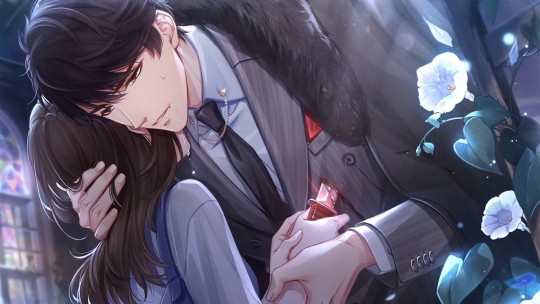
🌹I wanna end my blabbering with two precious moments from [CH 36- Victor split route] that echoes this theme even more.
MC: "I've always chased after your silhouette and I was never afraid. Because I know you'll always be there waiting for me. Victor, if you really disappear... I will be with you, and we will both be forgotten by the world."
MC's monologue: "Victor, once we have crossed countless dimensions and futures, and returned to each other’s embrace. If everything has to disappear with time, as dust into the wind... Then, I'm glad that we have our final promise."
[She's referring to the promise she made of being forgotten by the world to be with him & the promise Victor made earlier to never leave her again.]
#classic tragic love story at it's finest#yEs#mlqc victor#mldd victor#mr love victor#mlqc li zeyan#victor#li zeyan#mlqc zen#mlqc#mr love queen's choice#mlqc spoilers#mlqc cn
90 notes
·
View notes
Text
FICTIONAL CHARACTER ASK: RAPUNZEL
TAGGED BY: @giuliettaluce
@princesssarisa @amalthea9 @sunlit-music @mademoiselle-princesse @superkingofpriderock @lioness--hart @parxsisburnixg @astrangechoiceoffavourites @lieutenant-hel-odinsdottir
Favorite thing about them: Even tough since childhood she lived gaslighted as a prisoner of a person who confused abuse with love, Rapunzel still growed up to be an inteligent, strong willed, resourcefull and resilient woman, who despite her insecurities, never stoped longing and fighting for her right to be free and to be happy with her true love.
Least favorite thing about them:
The 1857 edition rewrite that putted in her mouth the line:
“Tell me, Dame Gothel, how it happens that you are so much heavier for me to draw up than the young king's son - he is with me in a moment”.
The fact that this rewrite is more well known than the 1812 edition version, where the Witch discorvers the Prince’s visits by noticing Rapunzel’s bodily changes happening due to pregnancy, is probably what leads to the misconception that “Fairy Tale Rapunzel is a stupid passive character”.
Three things i have in common with them:
I can be insecure of the outside world, like she was at the beggining of the story.
I am a very sensitive and prone to tears person.
I enjoy the singing of the birds.
Three things i don’t have in common with them:
I usually use my hair short.
I don’t know how to weave.
I don’t have her beautifull singing voice.
Favorite line:
When she presents the plan to run away with the Prince:
"I will willingly go away with you, but I do not know how to get down. Bring with you a skein of silk every time that you come, and I will weave a ladder with it, and when that is ready I will descend, and you will take me on your horse."
This confrontational dialogue exchange she has with the Witch in Into the Woods, after she starts developing PTSD:
“What's the matter”?
“Oh, nothing! You just locked me in a tower without company for fourteen years, then you blinded my Prince and banished me to a desert where I had little to eat, and again no company, and then bore twins! Because of the way you treated me, I'll never, never be happy”!
brOTP: In her main tale, the birds. Outside of her main tale: The Queen from Rumpelstilskin, The Princess from The Frog Prince, Queen Florina, Cinderella, Sleeping Beauty, Beauty of the Beast, Snow White, Little Red Riding Hood, Goldilocks, Jack of the Beanstalk, Hansel and Gretel, Hop o my Thumb and Puss in Boots.
OTP: The Prince.
nOTP: The Witch. Also, in Shrek 3 her pairing with Prince Charming is a match made in Hell.
Random Headcanon: The anime series Grimm’s Fairy Tale Classics gaved her the talent to play the harp, and i tought this was a nice touch to her character. Also, in my imagination, Rapunzel can imitate the singing of every bird that she listens, and she knows the healing power of the herbs, so she becomes a renowned healer queen.
Unpopular Opinion: I feel that the misconception that “Fairy Tale Rapunzel is a stupid, passive and weak character who just waits for good things to happen to her and her romance with the Prince is rushed and undeveloped, and telling her story nowadays is retrogressive” comes from most retellings made for pre schooler and elementary schooler audiences (wich usually are the versions that most people remember) that not only used the infamous line from the 1857 edition i just complained about and cut away her babies altogether, but even cut the element of Rapunzel coming with the escaping plan! When one comes to read the older italian variants (Petrosinella, Prunella, The Canary Prince) and the original Brothers Grimm tale, we learn that the Prince visits her several evenings, wich means they had a good time to develop the romance. Also in the original Brothers Grimm tale, Rapunzel is the one who comes with the plan to weave a silk ladder to escape with the Prince, meaning she is very strong willed, proactive and inteligent, and at the end, after surviving giving birth and raising two babies in a wasteland, wich also shows great strenght, when the Prince is reunited with her, she is the one who saves him by healing his blindness with her tears!
We also must considerate that this is a medieval renaissance tale collected to paper in the 19th century that portrays positively a relationship out of love between a prince and a peasant girl, while during those times arranged marriages restricted between members of one’s own class were the norm. In fact, Rapunzel’s relationship with the Prince is a rebellious, forbidden, vibrant and egalitarian love, not very diferent from Romeo and Juliet, another famous young couple separated by a tall window.
And, finally, there is the fact that the main heroine has premarital sex and a pregnancy and, instead of receiving a tragic sad ending like it would be expected from 19th century authors like the Grimms, she receives a happy ending! This is specially relevant when we remember that even to this day in our society women who have children out of wedlock are stigmatized.
The fairy tale is not perfect, after all the main villain is still an old single woman (Dame Gothel, the Witch). But there are some elements of it that are surprinsigly progressive, both for the medieval renaissance and 19th century standards and for the modern day standards.
Song i associate with them:
The main theme from Barbie as Rapunzel
youtube
The medieval song Scarborough Fair
youtube
Green Finch and Linnet Bird by Stephen Sondheim
youtube
Favorite picture of them:
Warwick Goble’s illustration for the italian variant Petrosinella:
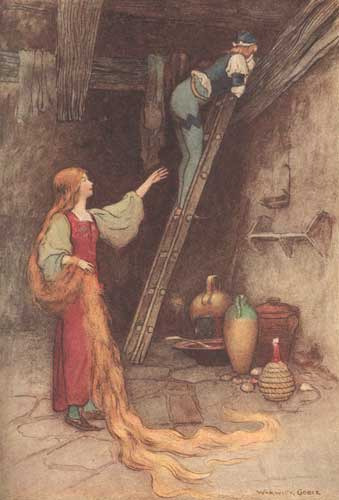
This illustration by Emma Florence Harrison

This illustration by Arthur Rackham
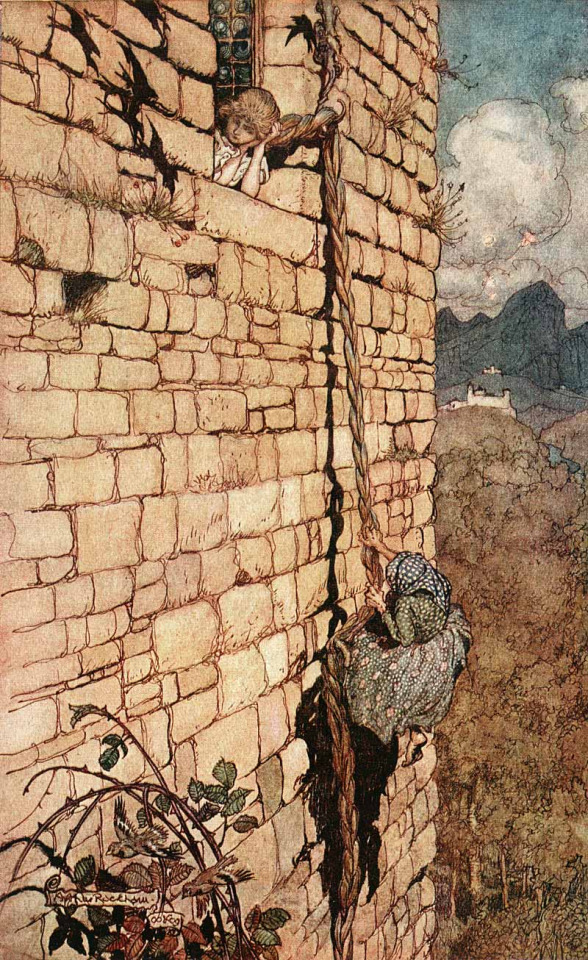
This illustration by Daniela Drescher

This illustration by Paul Hey
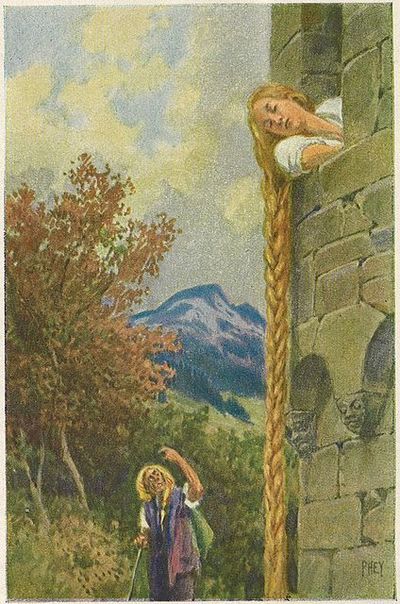
This illustration by Anastassija Archipowa
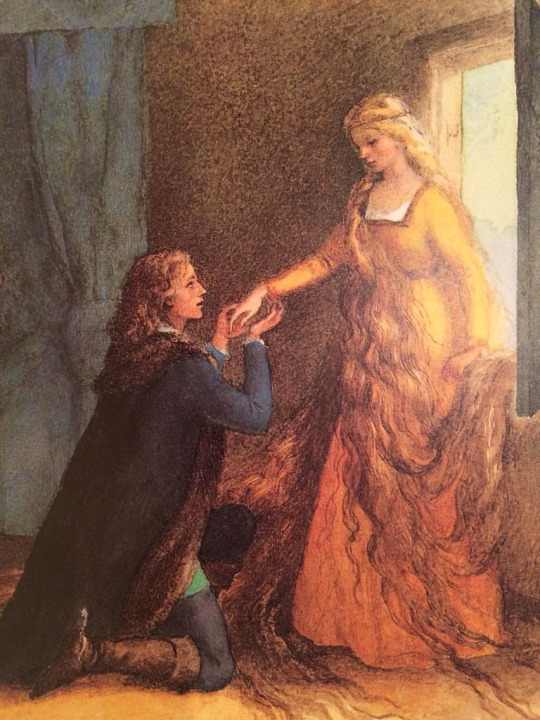
This illustrations by Alix Berenzy

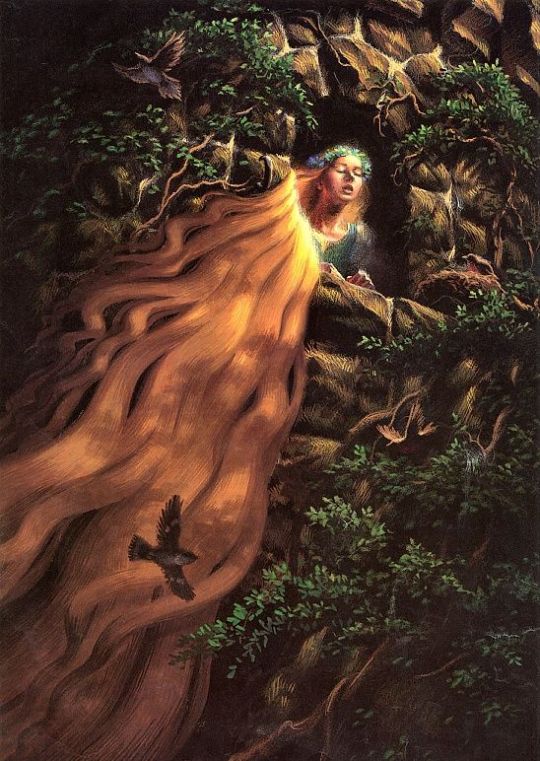
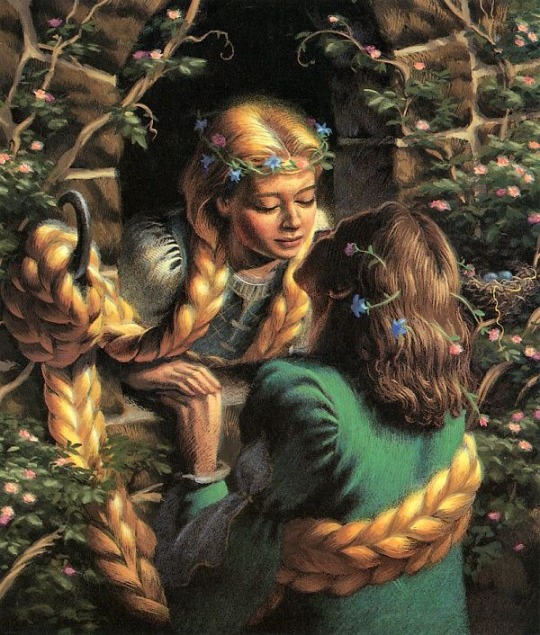
This illustrations by Paul O Zelinski
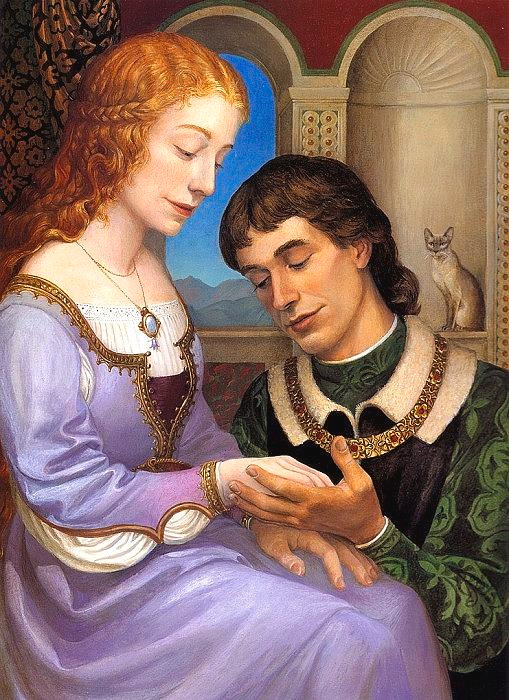

This painting by Deann Cumner

This illustration by Trina Schart Hyman

Barbie as Rapunzel
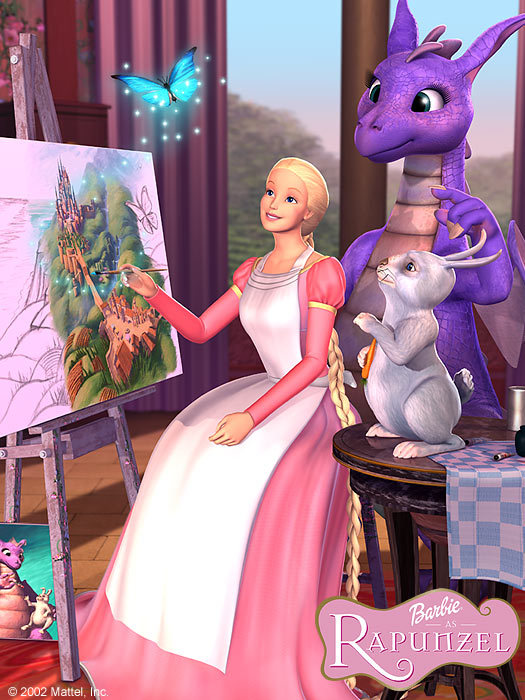
Shelley Duvall (with Jeff Bridges as her Prince) in Fairy Tale Theater
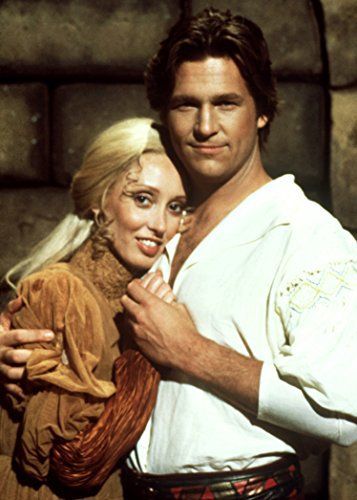
Pamela Winslow Kashani in Into the Woods

Mackenzie Mauzy in Disney’s Into the Woods 2014 (one of the few good things of that movie adaptation)
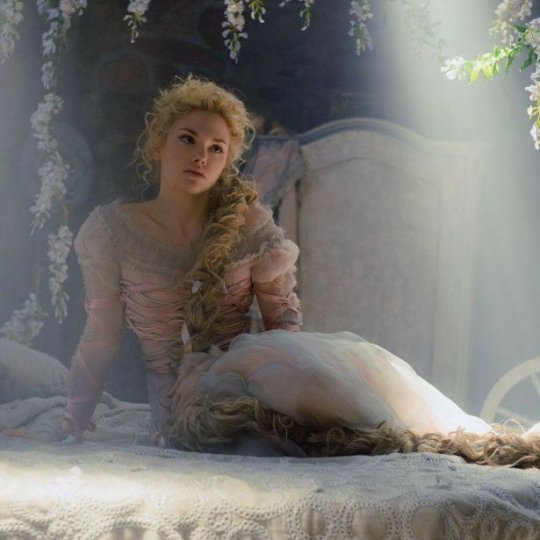
Luisa Wietzorek in the the German TV Movie Series Grimm’s Finest Fairy Tales


#fictional characters#fictional character ask#character ask meme#tagged#replied#answered#musings#fandom musings#pop culture#brothers grimm#tumblr mutuals#giuliettaluce#ask game#tag game#rapunzel#rapunzel variants#fairy tales#folklore#folk tales#mithology#fantasy#literature
49 notes
·
View notes
Photo
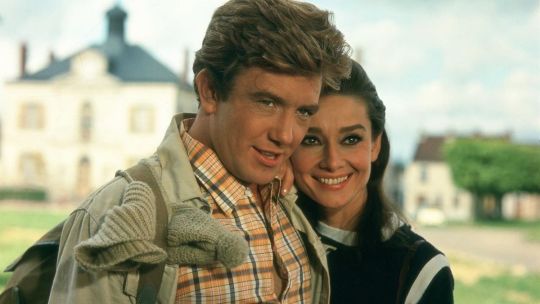
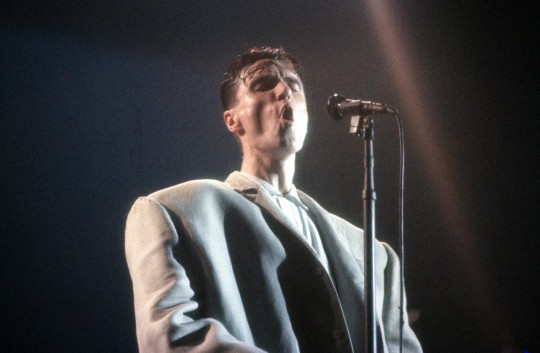
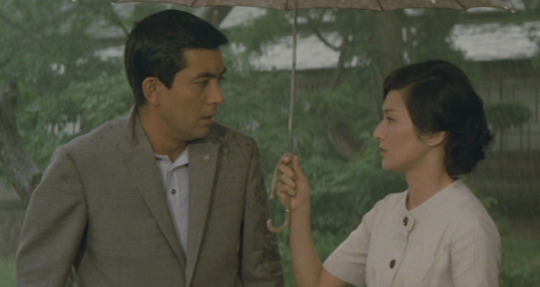
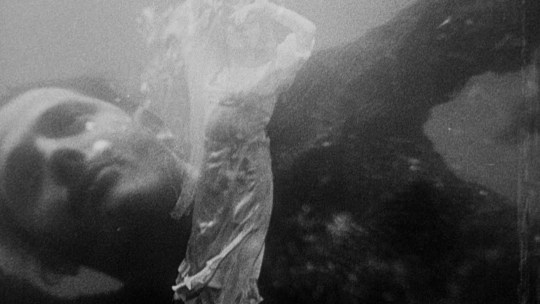

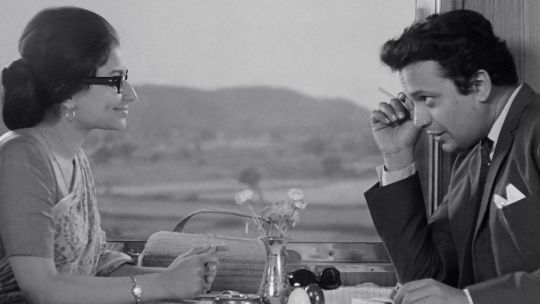
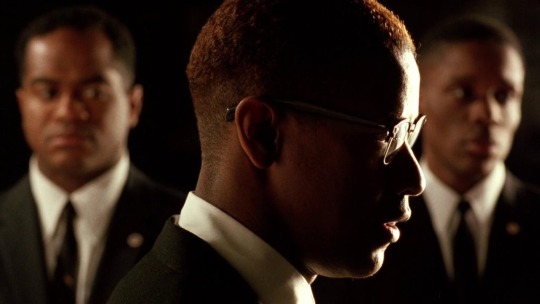
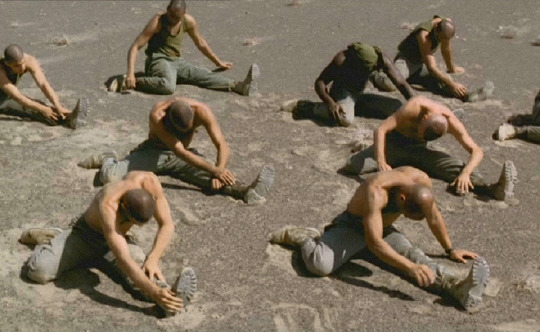

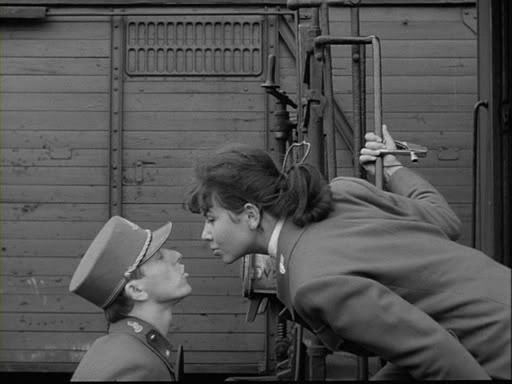
It’s the first day of 2021, which calls (yet again!) for my ten favorite new-to-me movies I watched in 2020!
The rules are the same as always: no movies from this past year (2020) or the year before (2019). Every other year is free game.
All ten of these movies are fascinating and beautiful and well worth your time, so consider this a strong endorsement for all of them. I’ve also included ways to watch all of the films (as of this writing, Jan. 1, 2021).
01. Two for the Road (dir. Stanley Donen, 1967; USA) Donen takes the ideas of romantic cinema and celebrates it while injecting a healthy dose of painful reality. He chooses two of the English language's most attractive movie stars, Albert Finney (in full himbo mode!) and Audrey Hepburn, and follows their ten-year marriage as seen on their various road trips across Europe. It's a memory piece more than anything else, but the arc of their relationship is clear and their palpable connection burns through the screen. These are two beautiful, intelligent adults who love each other deeply, who are still physically attracted to each other, who are able to hurl verbal jabs and insults at each other with the best of them. Finney is magnificent, but Hepburn sort of steals the show. In what is probably her finest onscreen performance, she gets to grow from a virginal bride to a fully fleshed out adult, living beautifully in different shades of sexy and goofy and bitter. They make a screen couple for the ages. The script is funny without losing its honesty, it's tragic without leaning too far into artifice, it's romantic without being treacly. It's a remarkable balancing act and makes for a masterpiece. (Two for the Road is available to rent online or viewed at this link.)
02. Stop Making Sense (dir. Jonathan Demme, 1984; USA) Stop Making Sense feels like a miracle. It hints at a narrative arc, but that part is unimportant. It’s a live performance recorded and packaged specifically for consumption as a film. In its brief runtime, it becomes a living, breathing, sweating testament to David Byrne’s skill as a performer, as a songwriter, as a storyteller, and to the remarkable talents of everyone in Talking Heads. It’s a breathtakingly joyous experience. I can’t remember the last time I watched a recording of a live performance that captured the same brand of energy, of buoyancy, that you feel as you’re leaving a great communal experience. This is a masterpiece that proclaims as loudly as possible that there is no joy greater than making art with people you love. (Stop Making Sense is currently streaming on Amazon Prime.)
03. Scattered Clouds (dir. Mikio Naruse, 1967; Japan) Filled to the brim with unspoken turmoil and emotional devastation, Naruse's final film chronicles the rough terrain of a relationship between a widow and the man responsible for her husband's death. Spanning years and exploring just how deeply these wounds can go, much of the Scattered Cloud’s success rests on the performances from Yuzo Kayama and Yoko Tsukasa. Kayama is a handsome, likable screen presence who beautifully lives in his own cloud of grief. Tsukasa gets a bit more to chew on, as this really is her story: her arc and her inability to move forward, despite the best intentions, is one of the film's most lasting ideas. Brutally sad but incredibly beautiful. The work of a master filmmaker. (Scattered Clouds is currently streaming on the Criterion Channel.)
04. L’Atalante (dir. Jean Vigo, 1934; France) My only regret with L’Atalante is that I didn’t see it sooner. The final (and only feature-length) film from Jean Vigo before his untimely death at 29, this film is a technical marvel and a humanist miracle. Featuring spirited performances from Dita Parlo, Jean Dasté, and the great character actor Michel Simon, and intoxicating dreamlike imagery, as well as a relentlessly romantic score from Maurice Jaubert, this film looks and feels like no other film from its era. (L’Atalante is currently streaming on the Criterion Channel.)
05. Daisies (dir. Věra Chytilová, 1966; Czechoslovakia) Věra Chytilová's iconic masterpiece of anarchic cinema more than lives up to its reputation. Operating on its own chaotic wavelength, Daisies follows the exploits of Marie I (Jitka Cerhová) and Marie II (Ivana Karbanová) who seek to spoil themselves after realizing how spoiled the world is. They begin to live extravagantly and rip off older men and cause general mischief. Over less than 80 minutes, Daisies upends a whole slew of cultural norms. Beautiful, ambiguous, funny, cynical, and truly visionary. (Daisies is currently streaming on the Criterion Channel and HBO Max.)
06. The Hero (dir. Satyajit Ray, 1966; India) The Hero sort of feels like Satyajit Ray's answer to 8½ in its meditation of fame and regret. Uttam Kumar is fantastic as Arindam Mukherjee, a superstar actor who works through his career and his loss of values in an interview with a reporter played by Sharmila Tagore, who is also fantastic. Under Ray's sleek direction, gracefully opening up the world of the train, and with his intelligent and human script, the cast uniformly sinks their teeth into this film. Kumar is the MVP out of necessity -- without him, the whole film would fall apart -- but the whole ensemble is remarkable, peppering the background of the train scenes and in Arindam's flashbacks. This also has one of the all-time great nightmare sequences. Easily one of the master director’s best films. (The Hero is currently streaming on the Criterion Channel.)
07. Malcolm X (dir. Spike Lee, 1992; USA) Malcolm X is a truly massive film housing an even bigger performance from the great Denzel Washington. Tracing Malcolm X’s life and career while juggling numerous tones and visual styles and spanning across decades and continents, this is surely Spike Lee’s most ambitious film up to this point in his career. Washington is onscreen for virtually all of its long runtime, from the early exuberant days before his imprisonment all the way up to that fateful day in the Audubon Ballroom, and he is, of course, tremendous. All that classic Denzel charisma and magnetism is on full display, whether in his impassioned speeches or in his more intimate scenes. Lee’s direction is top notch, making this full story about a life with an incalculably profound impact feel richly and deeply intimate. This is one of the essential American epics. (Malcolm X is available to rent online.)
08. Beau Travail (dir. Claire Denis, 1999; France) Beau Travail’s place in the modern canon of world cinema is assured, and Denis is rightfully seen as a master, but it really can’t be overstated just how much of a gem this film is. Pepper with sparse dialogue (though always packed with meaning), the film lives in one of two modes: muscular, suntanned men doing slow, precise choreographed exercises in the heat of the day and those same muscular men dancing and gyrating with attractive young women in some ethereal nightclub. Between these poles lies Denis’ almost cosmic meditation on masculine ego, homoerotic obsession, and regret. A fascinating, enigmatic, devastating beauty. (Beau Travail is currently streaming on the Criterion Channel.)
09. Only Angels Have Wings (dir. Howard Hawks, 1939; USA) Only Angels Have Wings might be Howard Hawks' crowning directorial achievement. The aerial work, the rainy nights, the beautiful atmosphere of the bars, the palpable camaraderie of the characters, the tragic loss of life and yet the persistence to move forward. Cary Grant leads a terrific cast, including a quietly moving Richard Barthelmess and a rarely-more-likable Thomas Mitchell, and his chemistry with both Jean Arthur (the most charming) and Rita Hayworth is a joy to watch. This film seems to dabble in multiple genres at once, subverting the cliches of the Hollywood formula while still embracing the melodrama and the artifice within. In that way, the film feels very strange, but if the viewer lets themselves be carried along with Hawks' unique rhythm, the reward is one of the most fascinating and exciting films in Hollywood's fabled 1939 output. (Only Angels Have Wings is available to rent online or viewed at this link.)
10. Closely Watched Trains (dir. Jiří Menzel, 1966; Czechoslovakia) Between the precise composition of the shots and the young narrator-protagonist, Closely Watched Trains feels like a spiritual predecessor to Wes Anderson's work. This comparison extends to the thematic content of the film as well, as the story of a young man coming-of-age against the backdrop of the Nazi regime is definitely cut from the same cloth as The Grand Budapest Hotel. Lucky for me, I love Anderson's work, and Grand Budapest is my favorite of his, so Menzel's stylistic flourishes immediately endeared me to the film.Menzel maintains a skillful tonal balancing act throughout Closely Watched Trains. Even under the wry, almost self-deprecating humor, the film never loses track of preciousness of life and the horrific tragedy of war. Beautiful cinematography, strong performances across the board, a memorable score, and a clever script make this a gem of the Czech New Wave and a moving, delightful, and accessible coming-of-age tale. (Closely Watched Trains is currently streaming on the Criterion Channel.)
Honorable mentions (in alphabetical order): Ace in the Hole (Billy Wilder, 1951), The Band’s Visit (Eran Kolirin, 2007), But I’m a Cheerleader (Jamie Babbit, 1999), Carnival of Souls (Herk Harvey, 1962), A Cottage on Dartmoor (Anthony Asquith, 1929), Crossing Delancey (Joan Micklin Silver, 1988), Divorce Italian Style (Pietro Germi, 1961); Eat Drink Man Woman (Ang Lee, 1994), Fireworks (Kenneth Anger, 1947), The Freshman (Fred C. Newmeyer & Sam Taylor, 1925), The Hitch-Hiker (Ida Lupino, 1953), Kuroneko (Kaneto Shindo, 1968), Le Bonheur (Agnès Varda, 1965), Le Notti Bianche (Luchino Visconti, 1957), Like Father, Like Son (Hirokazu Kore-eda, 2013), Local Hero (Bill Forsyth, 1983), Love & Basketball (Gina Prince-Bythewood, 2000), Mad Max 2: The Road Warrior (George Miller, 1981), Monsoon Wedding (Mira Nair, 2001), One Sings, the Other Doesn’t (Agnès Varda, 1977), Pennies from Heaven (Herbert Ross, 1981), Pickup on South Street (Samuel Fuller, 1953), Rushmore (Wes Anderson, 1998), Seven Samurai (Akira Kurosawa, 1954), Sleepless in Seattle (Nora Ephron, 1993), Symbiopsychotaxiplasm: Take One (William Greaves, 1968), Tea and Sympathy (Vincente Minnelli, 1956), They Shoot Horses, Don’t They? (Sydney Pollack, 1969), Tomboy (Céline Sciamma, 2011), Wendy & Lucy (Kelly Reichardt, 2008), Within Our Gates (Oscar Micheaux, 1920), Whisper of the Heart (Yoshifumi Kondo, 1995), and Who Framed Roger Rabbit (Robert Zemeckis, 1988).
And some miscellaneous viewing stats:
First movie watched in 2020: A Fantastic Woman (Sebastián Lelio, 2017)
Final movie watched in 2020: Holiday (George Cukor, 1938)
Worst movie watched: The Notebook (Nick Cassavetes, 2004)
Oldest movie watched: Ten films by the Lumière Brothers (Louis Lumière, 1895)
Longest movie watched: Seven Samurai (Akira Kurosawa, 1954; 207 minutes)
Month with most amount of movies watched: December (58 movies, including shorts)
Month with least amount of movies watched: February (11 movies) (pre-COVID, naturally)
First movie from 2020 seen: Birds of Prey (Cathy Yan, 2020)
Total movies watched: 455
#sometimes elliott watches movies#year in review#two for the road#stop making sense#scattered clouds#l'atalante#daisies#the hero#malcolm x#beau travail#only angels have wings#closely watched trains
100 notes
·
View notes
Text
Episode Review: ‘Obsidian’ (Distant Lands, Ep. 2)
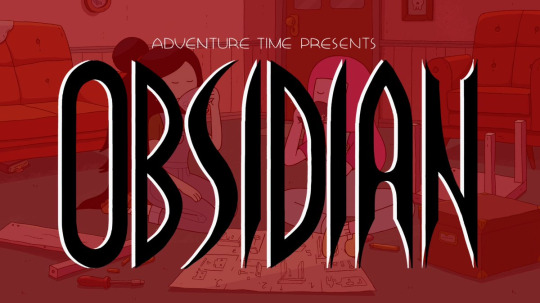
Airdate: November 19, 2020
Story by: Jack Pendarvis, and Kate Tsang, Adam Muto, & Hanna K. Nyström
Storyboarded by: Hanna K Nyström, Anna Syvertsson, Iggy Craig, Mickey Quinn, Maya Petersen, James Campbell, & Ashlyn Anstee
Directed by: Miki Brewster (supervising), Sandra Lee (art)
Of all the many colorful characters in Adventure Time perhaps none has a more elaborate backstory than Marceline the Vampire Queen. In many ways, Marceline really was the writers’ gold goose, engendering complex story after complex story. By the time the series ended, the vampire’s life had in more ways than one been woven into the very fabric of the show’s mythology.
But because I am a Marceline fanboy—whose zeal for her majesty is rivaled perhaps only by Glassboy himself—I always felt like the show could have done even more with her backstory; I mean, when the series finale aired, there were still plenty of questions that had yet to be answered (What happened to her mom? What is Simon going to do now that he’s “cured”? How did Marcy and Bubblegum meet? Were they romantically involved before the events of the main series? How did it all go south?). Nevertheless, when "Island Song” played for the last time at the end of “Come Along with Me,” I forced myself to push aside this minor, fannish grievance and applaud the show for writing such an excellent character. I didn’t need for every last detail of her life to be explicitly shown on screen. I was happy.
But then, about a year ago, news dropped that one of the Distant Lands specials would really delve into the history of Marceline and Bubblegum’s relationship. In an instant, I tossed my stoic “I-am-satisified-with-what-I-received” mentality right out the window. We were going to get another Marceline episode, and it was going to dive back into her elaborate backstory!?! I could barely contain my excitement as I waited for the episode to drop.
Well, was my excitement worth it? Or was “Obsidian” a big ol’ let down—a tragic victim to grandiose expectations that were never meant to be fulfilled?
I’m quite happy to say that not only was “Obsidian” a remarkable special in its own right, but it is arguably one of the strongest episodes of Adventure Time, period.
The plot of this episode is fairly standard, as far as Adventure Time episodes go: Glassboy (a new character voiced by Michaela Dietz, the voice of Amethyst from Steven Universe) accidentally sets a giant fire monster named Molto Larvo loose on the Glass Kingdom, and Marceline and Bubblegum—who we learn have been living their best cottagecore life together in Marcy’s cavehouse—are forced to save the day. But the series’ writers take this otherwise quotidian adventure idea—a story which, at least on paper, could have easily fit in during any of the show’s many seasons—and employ it as something of a Trojan Horse, using it as a pretense to delve into both Marcy’s traumatic childhood and her and Bubblegum’s romantic history. And, boy, is it a ride!
With regard to the former story thread, the audience learns that sometime after the Mushroom Bomb detonated, Marceline and her mother, Elise (voiced this time not by Rebecca Sugar, but by actress Erica Luttrell, who played Sapphire in Steven Universe), roamed the wastelands in search of shelter; after Marceline’s mother came down with some sort of sickness, she sent Marceline to be on her own. Elise was hoping that this would spare Marcy the trauma of seeing her mother die before her very eyes, but due to some communication issues, Marceline never learned what became of her mother. As such, Marceline began blaming herself for “leaving” her mom to die in the wreckage of the world. This plot thread is perhaps one of the bleakest that Adventure Time has ever explored, and the show does it masterfully, balancing the darkness (e.g., Marceline’s mother coughing up blood) with bright spots of comedy (e.g., the "wazzup” dog) that never feel distasteful.
Likewise, when it comes to the story thread about Marcy and Bubblegum’s romantic history, the special does not hold back. We get to see “Bubbline” at its best and its worst. I have a feeling that the word “fan service” is going to be used by a lot of folks when talking about this episode. As the AV Club writer William Hughes notes, this word is usually hurled around like a pejorative, but it aptly describes the appeal of “Obsidian”. After all, this episode really is “fan service at its finest”—not only does it give the ravenous shippers the story tidbits that they have so long to see (e.g., the moment Marcy gave Bubblegum her rock shirt, Bubbline’s epic break-up), but—and this is very important—it does so in a way that is fundamentally meaningful. “Obsidian” does not feel self-indulgent, unnecessary, or pandering. On the contrary, it is overflowing with deep emotion that allows us to better understand how Bubblegum and Marceline really feel about one another. Sure, over the centuries that the two gals have bummed around Ooo, they have bickered and fought, but deep down, their love is passionate. In many ways, it is like the titular obsidian, which means that nothing short of an enchanted diamond pickax is strong enough to break Bubbline apart for good.
(It’s also quite nice that after seasons and seasons of tip-toeing around the question of Marceline and Bubblegum’s sexuality, “Obsidian” can explicitly focus on their life together, showing the two characters cuddling, kissing, and dancing. In terms of LGBTQ+ representation, it’s a huge leap forward, and I’m so happy that Adventure Time has had a part to play in normalizing queer relationships!)
Marceline episodes almost always featured a catchy diddy, but "Obsidian” really cranks things up to 11 by featuring a whole bevy of catchy songs, several of which are perhaps among the show’s strongest. The first right banger, “It’s Funny,” is the song that plays over the special’s credits. With a grunge-meets-riot grrrl feels, this track really sets the tone for the episode, signaling to the audience that we’re in for, as Lumpy Space Princess once put it, some “drama bombs.” The next standout is “Woke Up,” a brutally honest diss track that Marceline used both to contain Molto Larvo and break up with Princess Bubblegum centuries prior to the start of this episode. This song was written by pop rocker Zuzu, and it—as the kids say—slaps. Layers of fuzzed-out guitar and digitally processed vocals are used expertly to sell Marceline’s emotions and convey how, on the surface, she’s delighted to no longer be under Bubblegum’s romantic spell... even if her heart may not be so sure.
But arguably, the musical jewel of the entire special is “Monster,” a somber ballad that Marceline sings to Bubblegum when they find themselves trapped in the collapsing furnace and are facing what they believe is certain death. Written by indie pop artist Half Shy, this song is, in many ways, something of the inverse of “Woke Up”: soft, happy, and filled to the brim with a sort of love that few are lucky to receive and even fewer can honestly express. Not only does “Monster” finally cement Marceline’s real, visceral love for Bubblegum in song form (remember: almost every prior Bubbline song was either indirect or delivered by an angsty, heartbroken Marceline), but it also “tames” Molto Larvo, allowing him to metamorphose into a strange but harmless cat-butterfly critter. Just like “Come Along with Me,” “Obsidian” proves that the power of love and music will save us in the end—if not physically, then at least emotionally.
Regarding the production-side of things, there’s a lot of praise to doll out. First off, the look and style of “Obsidian” is gorgeous. While “BMO” opted to experiment somewhat with the classic Adventure Time art style, trading cel shading for an almost watercolor feel, “Obsidian” echoes the aesthetic of the original series. That said, there’s an undeniable animation bump—likely courtesy of that sweet, sweet HBO money—that lets Ooo and its denizens shine in all their glory. You can tell that Adam Muto, art director Sandra Lee, supervising director Miki Brewster, and all the members of the production staff really went above and beyond the call of duty. The episode's soundtrack, composed by Amanda Jones, as deserves a shout-out. Jones did an excellent job mixing the chiptune style of the original series with a bass-heavy rock sound that highlights Marceline’s starring role. Bravo!
As another production aside, I should point out that CN/HBO’s decision to make these specials each 44 minutes was the right call. The 11 minute format of the original series often left something to be desired when it came to plot development, as many an important episode was forced to end somewhat prematurely due to time constraints; conversely, the 8-episode miniseries format that the show experimented with during its latter days sometimes felt like too much time (Stakes, Islands, and Elements all had whole episodes that felt like nothing more than the show treading water). The length of “Obsidian”, however, was just right, giving us plenty of time to take in what was happening without ever feeling like it was dragging.
A final aspect of this episode that is worth mention is its many call-backs to previous episodes and characters. “BMO” was mostly a self-contained story that, due to its nature as a prequel in space, really couldn’t reference the Land of Ooo without feeling forced. “Obsidian,” however, throws in everything and the kitchen sink (Adventure Time superfan and all-around cool person Jagm has collected most of them here for those of you who want to see everything laid out nicely). Stand-outs for me include Choose Goose (someone who we really haven’t seen since season five) smuggling sketchy products into the Candy Kingdom, post-Ice King Simon trying his hand at open mic nights, Bronwyn as an adventurous hero, and Finn the (Adult!) Human complete with beard and scars! Of note, Jake does not appear in this episode, except as a tattoo on Finn’s chest. Many in the fandom are now speculating that the events of “Obsidian” take place after our beloved shapeshifting dog’s death. Oh say it ain’t so! Perhaps we’ll learn more in “Together Again.”
Mushroom War Evidence: Unlike “BMO,” which directly referenced the Mushroom War and its fallout (both literally and figuratively), this episode returned to the show’s roots by featuring gobs of explicit hints in throw-away lines or elaborate background pieces. Honestly, there is far too many to list here in a pithy paragraph, but some major references include: the reveal that the Glass Kingdom, like the Fire Kingdom, was created by ‘magic’ blaze from the heavens (almost certainly a nuke); the fact that Marceline and her mother wandered for a time in the debris-filled wastelands following the apocalypse; and the reveal that Marceline spent at least part of her childhood holed up in a bomb shelter surrounded by the bones of myriad dead humans. Honestly, while references to the Mushroom War have always been sad footnotes to an otherwise cheery show; in this episode, however, the references are very graphic, illustrating the sorrow and horror of mutagenic war.
Final Grade: As I said earlier, I’m a Marcy fanboy, so I’m horrible biased, but I don’t care. This episode rocked. Q.E.D.

#adventure time#atimers#adventure time distant lands#distant lands#atdl#obsidian#marceline the vampire queen#marceline#bubblegum#princess bubblegum#bubbline#adam muto#hanna k#hanna k. nyström#jack pendarvis
76 notes
·
View notes
Text
[ choi san, genderqueer 20 ] Let’s give a warm welcome to one of Sparkwood’s finest, NOAH FOSTER !! Before coming here, THEY/THEM once lived on the pages of SCREAM:TV SHOW. Though now they currently spend most of their time as a(n) ART MAJOR. If you ask the townsfolk about what they are like, you will hear that they are IMAGINATIVE but also WEAK-WILLED. If they had a theme song it would be NEW SKIN-BEACHWEATHER Let’s see how their story unravels this time.

Words like Easily excitable and talkative are always used when Referring to Noah, As child, their student reports always had that they had were a pleasure to have in class but would talk way too much and it was a distraction at times, but that never stopped Noah, always passionate about things they found interesting and they would talk your ear off if you gave them the opportunity. But their overeagerness and curiosity usually got them in trouble, and was hard for their single mother Fiona to handle sometimes, she tried her best but being a nurse was a very time-consuming job so growing up they were mostly a latchkey kid and tried their best not to cause both of their lives to be more stressful, and an ADHD diagnosis at age 12 calmed them down a bit with the help of Adderall, but still, they were a handful even when they tried their best not to be.
Being alone a lot gave them a lot of freedom, they became obsessed with this true-crime podcast narrated by a local of Lakewood named Piper Shaw, and that hyper fixation stuck, they became obsessed with horror movies stereotypes, and also unsolved murders they wondered if it had to do with the fact that his father was murdered by an unnamed mugger and his file turned to a cold case, one crime he never got to have an ending for. They brought their passion for horror to life with their artwork, starting to use their talents to start a graphic novel series based on unsolved crimes revolving around their town. But it wasn't enough for Noah they were way too curious and it was there when a series of murders happening in the small little town that got them in trouble because their friends and Noah thought they were smarter than the cops and decided to investigate on their own to try and figure it out since the cops had no leads and seemed to be so unhelpful.
It's almost like the murderer knew their every move before they could make it, and soon their friends were becoming the victims of this murder spree, when it came to light that their Idol was the one committing the crimes for content on their podcast and her own personal vendetta, Noah never felt more betrayed, they suffered so much loss losing not only their girlfriend but multiple friends, but because of their hyper fixation and sticking their nose where it belonged, they put themselves and their friends on the murder's radar and the survivor's guilt ate them alive, they went to therapy and even moved from Lakewood to Sparkwood at 17, but sometimes when they were alone it got to them and they never would get over that.
Moving to Sparkwood their entire demeanor changed, still having a love for Horror but keeping a bit quieter about it and to themselves, not wanting to involve or hurt anyone around them again. When they Graduated from Sparkwood Institute they shocked not only their mother but themselves when instead of doing something tech-related, one of their other passions, but they became an art major. Always their happiest when they were creating something as opposed to doing something in graphic design, still doing their Graphic horror novels almost as a tribute to his friends at first, those were more for their personal happiness changing the story so their friends survived instead of what really happened, but they also reimagined horror classics that they shared with the public.
Spending time in college gave Noah more time to focus on who they were, here they weren't the tragic survivor of a tragedy but it was focused on who they were, and they searched inside themselves and it took them a while to find out who they really were. Things they were bullied for in school not always sticking to more masculine things, or how they sometimes favored feeling soft and feminine, but it wasn't a constant thing never favoring one gender over the other, it was when they did some heavy research they realized they resonated with both equally, and they learned that they identified as Non-binary, thankfully the small number of friends they did have supported them, even their mother and grandmother supported them by switching to They/Them pronouns. They never really felt truly themselves till the first person called them by the proper pronouns, it was the gender euphoria they didn't know they needed but craved so desperately, it was good for them to have a label on something they were so unsure of more of their life. Still learning every day about their gender identity and trying to be braver about stepping out of their comfort zone and presenting how they really felt, it was still a learning process but they are loving every moment of it.
4 notes
·
View notes
Note
Hello, I hope I'm not bothering you, but do you have any good "enemies to lovers" recs, may they be books or movies?
I neeeever am bothered by people asking for recommendations. Those are my favorite asks because I am nothing if not in love with my own opinions, lol
Books
Obviously, The Viscount Who Loved Me by Julia Quinn, the best Bridgerton book, because I’ve been blogging about it lol. If you haven’t read it, it’s basically “rake tries to seduce the beauty of the ton, beauty’s older sister cockblocks him, he realizes that He Is Into It”
The Hating Game by Sally Thorne is a classic. Very light and fluffy contemporary, two people who’ve always hated each other begin competing for the same job and fall in love.
Kate Quinn’s Mistress of Rome series is a saga and the initial big ship of the first book (which you do have to read lol) is not enemies to lovers. However, the NEXT ship which dominates the last two books of the series (which is four books long, and tbh... I recommend the second book but it’s a prequel and can be skipped technically) is SOOOOOOO GOOD. It’s really “childhood friends to young lovers to SEVERE ENEMIES still secretly in love” and it’s literally epic lol. Essentially, the series is set in Ancient Rome and Sabina (very bitchy Roman noblewoman) and Vix (child of a former gladiator, soldier) are friends who I think lose their virginities to each other? And are in love as kids. But then she fucks him over and marries the emperor. Who he actually begins to loyally serve! But he haaaates Sabina because she.... constantly backstabs him lol. But he also looooves Sabina and gets off on everything she does. And she wants him so badly. And it is delicious. And I live for it.
Both of the Evie Dunmore books I’ve read, Bringing Down the Duke and especially A Rogue of One’s Own are very enemies to lovers. In Bringing Down the Duke it’s a bluestocking versus a duke who for political reasons is her enemy. In A Rogue of One’s Own it’s another bluestocking versus a rake who has known her basically all their lives. They have to begin working together and fall in looove.
Sarah MacLean LIVES for this trope lol. Her first true enemies to lovers was Twelve Scandals to Start to Win An Earl’s Heart, in which the heroine is a scandalous young woman and the hero is a duke determined to avoid scandal--and he rebuffed her before the book began, so they hate each other. But he also has a massive boner around her, of course.
My favorite MacLean book, A Rogue By Another Name is another “childhood friends turn enemies to lovers”. The leads, Penelope and Bourne (last name lol) were best friends as kid and he basically fell off after life set in. Her family now has hold of his ancestral lands, and Bourne essentially blackmails Penelope into marrying him so that he can get those lands, after which she DESPISES him even though they had..... extremely great sex lol. It’s SUPER GOOD, and it involves borderline voyeurism, which is great.
Then No Good Duke Goes Unpunished is very enemies to lovers. The heroine was set to become the hero’s stepmother--then he woke up covered in blood with her missing. He then finds out, after years of being despised by society as a presumed murderer, that she is very much alive with a fake identity lol. It’s WILD.
The Rogue Not Taken is an enemies to lovers roadtrip romance. The heroine thinks the hero is a horrid rake who purposefully ruins marriages. He thinks she’s a stuck up brat. They end up journeying together and he eats her out in a moving carriage.
Theeen there’s Daring and the Duke. The hero literally thought the heroine was dead (MacLean loves this) and is OBSESSED with her, but she hates him because the man who raised them both basically pitted them against each other after their days of being childhood sweethearts. It’s very dark and delicious, and there are blow jobs! Blow jobs don’t happen enough in romances, especially historical romances. More BJs! They are fun!
If you’re interested in a dark and BONKERS romance, Desperate Measures by Katee Robert is a retelling of Disney’s Aladdin about a modern Jafar and Jasmine getting together after he takes over her father’s criminal empire. It’s definitely extremely explicit and a bit fucked up. The book comes with content warnings; the first sex scene is dubcon. (Like you’re reading from her perspective and she WANTS IT but she says no.)
Beach Read by Emily Henry is a cute contemporary in which the hero is a literary author and the heroine is a romance novelist. They find themselves in neighboring beach houses and basically challenge each other to write in the other person’s genre. Very light enemies to lovers.
A Heart of Blood and Ashes is a fantasy romance by Milla Vane! Essentially, the hero’s parents were killed by the heroine’s father and he’s out to kill her father and overtake his throne. Luckily, she’s on board. But he needs to marry her in order to accomplish his goals. They do not trust each other whatsoever and torment one another a lot. For context, within the first fifty pages she gives him a handjob while her hand is covered in her own brother’s blood (and yes, he did kill her brother). It’s great.
The Worst Best Man is about a wedding planner who suddenly finds herself needing to work with her ex-fiance’s brother... who she holds responsible for her fiance leaving her at the altar. Very fun and sexy contemporary.
The entire Four Horsemen series by Laura Thalassa. In each book, the heroine falls in love with a literal embodiment of one of the four horsemen of the apocalypse, who is here to bring the end of the world. VERY heavy enemies to lovers. Kinda dark at times? Kinda fucked up at times? I love it a lot? It begins with Pestilence; War and Famine have already been released, but Death has not.
From Lukov with Love by Marina Zapata. It’s a figure skating romance; a down on her luck skater pairs up with a male skater who is extremely successful, and who she’s known for years and hated. Verrrrry slow burn, but fun.
Movies
The Proposal, of course, starring Sandra Bullock and Ryan Reynolds. You’ve probably seen this, but the setup is that she’s his evil boss, he’s her assistant, and she’s about to lose her visa so she bribes him into marrying her so that she can get citizenship. But ruh-roh, they have to go to Alaska for his family reunion and he’s also got a great body and is like, an Alaskan Rockefeller?
Obviously, Clueless which is enemies to lovers by way of former stepsiblings, and also by way of the only valid retelling of Emma. Emma itself is not enemies to lovers, really, but Clueless amps that aspect up a bit.
If you want a super tragic version, warning lol--House of Flying Daggers. It’s a wuxia movie, so melodramatic to the max. She’s a blind daughter of the leader of a vigilante group, he’s a soldier who’s gone undercover to follow her to their stronghold. Many reveals and one of my favorite dramatic love stories ensues.
Princess Diaries 2, duh. Baby Chris Pine? Anne Hathaway? PLEASE BITCH.
365 DNI. If you haven’t watched yet, watch it and thank me later. The greatest cinematic contribution of the last decade.
Down with Love. It’s a delightful take on like, 50s/60s sex comedies in which the heroine writes a book that convinces women to ignore love and men, which makes the hero look bad and makes it difficult for him to get laid. So he sets out to basically..... wear a different persona? And seduce her? It is one of the funniest movies I’ve ever seen, and I adore it. Renee Zellweger and Ewan Macgregor have great chemistry in it too.
The Thomas Crown Affair, starring extremely hot Pierce Brosnan and Renee Russo. She’s an insurance investigator, he’s a billionaire who basically is suspected of stealing priceless works of art because he’s bored. She investigates him and immediately begins fucking him. Has a scene where she dances with him while wearing a completely transparent dress. Then they fuck everywhere in his house. I have never wanted to be between two people more.
The Painted Veil. A socialite marries a dorky scientist for convenience, then cheats on him. He finds out and basically forces her to go to China with him, where he is fighting the cholera epidemic, as an extremely long and petty murder suicide attempt. But they get to know each other! And the ice begins to melt! Warning: tragic but lovely.
Casino Royale YES I SAID THAT. The James Bond reboot movie that explains why he’s such a whore!!! HE WAS BROKEN!!! Basically James Bond is not like... a learned man... in this movie. So he’s a cocky bastard and the Bond girl is impossibly sexy Eva Green as Vesper, who’s the “money man” on his mission. They begin as bickering assholes and then fall in love. But also! Tragedy!
The animated Anastasia movie is one of the finest enemies to lovers movies of any time, I will defend this forever
Anyway.... Hope this gives you some ideas! Lol
27 notes
·
View notes
Text
Top 10 Sealab 2021 Episodes (Comission)

Happy 2021 Everyone! After an utterly AWFUL fucking year, it’s nice to be in a brand new year with brand new possiblities, new projects you’ll see soon, finsihing the old.. and all that good stuff. And good friend of the blog and only patron and contributer kev had a great suggestion to comission to kick off the year. Since it’s 2021 it’s only fair ot honor one of the very first adult swim shows, one taking place in the same year and still one of it’s funniest and fucking weirdest, and as we’ve seen that threshold is vast: Sealab 2021 Sealab was created by the wonder twins of Adam Reed and Matt Thomspon, and if those names sound familiar.. that’s because their the guys who created Frisky Dingo, a cult classic i’ll defintely have to write about someday soon, and more famously and in Matt’s case still to this day, Archer. Yup, after adult swim jerking them around lead to the closing of their initial studio, the two moved to FX and here they are. So yeah this is where the roots of a lot of archers workplace shenanigans and petty dickery come from. But even ignoring what it’d lead to, Sealab on it’s own is pretty damn good and holds up pretty well. Some jokes.. have not aged well, especially the treatment of Debbie as the villiage bicycle, but on the whole most of the humor is just really funny, really weird and really insane and I still love it after this revisit even if some episodes didn’t hold up so good, most of them held up good or even better than I remembered. The show was THE first abriged series, taking bits of old forgotten and seemingl really damn boring hannah barbara show sealab 2021, and using the footage to tell the tale of a bunch of assholes, weirdos and what have you running an underwater research station.. and being so bad at it or getting into such other insane bollocks it often blew up. Continuity was loose, jokes were the priority, and dialouge was key since the animation was not great in any way shape or form, but the cheapness was enough of a charm and improved enough with time that it didn’t really matter. The show was good and set the bar for adult swim shows for better or worse alongside other greats like Home Movies, Aqua Teen Hunger Force and others. It also had a unique cast of mostly small time actors, and bafflingly one respected news pundit as local asshole idiot head Stormy, and broadway legend Henry Goz as series MVP Captain Murphy. It was good, it was part of my childhood and teen years, and I love it so. I bought the dvds, quoted it decently and will again now Kev’s brought my fire for the series back. So naturally for a series like this since regular reviews just don’t.. work on something this insane sometimes, i’m instead counting down my top. 10 . episodes. Yes top 10 lists are comissionable, 5 bucks a pop. As long as I know the series well enough i’d be glad to and here I ws more than honored to. I also uped my game this time and rewatched every cantidate and thus I feel this may be one of my best lists yet. So without further adeu... grab your grizzlbees oninon burst , your bebop cola and your pitcher of whale cancer. this is the top 10 episodes of sealab 2021!
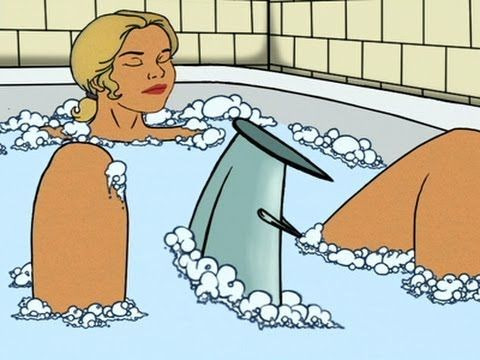
10. Tinfins This one’s a classsic just for it’s uniquness, taking the piss out of glitzy and vapid hollywood insider shows and their annoying hosts, while also being delightfully weird, from mocking the show’s own animation by having detailed cgi used to map the limited animation, to Erik Estrada’s interview where his fictional self is clearly having none of toni and is also clearly getting wasted, to the utter bizzarity of Kid N Play being the films directors.. it’s just a good time.
But what REALLY makes the episode are two things: The first is a series of increasingly bizzare commericals for Grizzlebees, a fictional restraunt that would become a staple of the show: From a simple commerical showing off their onion bursts, to their kids meals with tonic water, to Henry Goz’s utterly bizzare farm based commerical for it, to finally a commerical about depression being okay because grizzlebee delivers that’s pitch black as it is utterly hilarious, it’s just one hit after the other. The crown jewel of the episode of course is the trailer ofr tinfins itself, which is insane and includes great bit after great bit, the best being the titular mecha shark cutting the power “How the hell can it cut the power? It’s a shark. “ Holy Crap indeed.

9. In the Closet A bottle episode, which Sealab really excelled at and not the last on this list by a mile, as the show’s key was it’s dialouge the episode had a simple premise it quickly managed to have make some pretty insane turns. Marco, played by the glorious Eric Estrada and Muprhy, played by the late and very game Harry Goz, have been trapped in the suply closet for a few days, with Muprhy, being muprhy, having already married a bucket who has a history as a “Hookermop” named wendy. Soon other sealabians get caught inside too, and it results in plenty of hilarious gags, From muprhy sucker punching the hell out of everyone, to Sparks panicking under claustrophiba, to the repair guy getting sucker punched and no one caring much about his well being. This one lives off of Muprhy as while the others are good, Goz as he usually did during his time on this earh and on this series before his untimely passing, steals the whole damn show, and the ending, where it turns out Muprhy adopted and starved a bunch of fighting dogs, is a nice twist on everything. And the punchilne to it is utterly fantastic “It could be worse” “How in the hell could it possibly worse?!” “We could be out there.. with Stormy”.
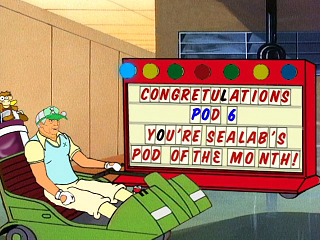
8. The Legend of Baggy Pants Speaking of Bottle Episodes and Captain Murphy being awesome.... this one narrowly beat out the episode it’s a spirtual sequel too, the classsic all that jazz, but this one is easily better. Like that one it’s a bottle episode that’s almost entirely just Captain Muprhy on some sort of shenanigan, with only abit of other cast, in this case Hesh, Eggers, and an unfortunate phone operator. In this case the premise is simple, kind of nuts, and utterly hilarious and utterly captian murphy: Captain Muprhy is having a round of Golf in Sealab, which is weird but fits the character but what ratchets it up to funny is apparently this underwater research station, for no reason, has a pro shop. So after loosing his last ball in a reactor, and sending poor hesh in to get it leading to the advent of the glorious Monster Hesh, Muprhy spends the entire episode tooling around in his “Muprh Mobile” trying to find the pro shop. As a result it’s basically 11 glorious minutes of Harry Goz going absolutely mental as muprhy, and it is as great as that sounds. From Muprhy’s sudden hatred of pod 6, to his bullying of Eggers, a hapless sealabian he runs into and then tries to run over, his bullying of dolphin boy and then trying to run him over, to his compuance as eggers steals his stuff and then his muprh mobile, it’s just glorious riffing from one of the best in the buisness and Harry is still deeply fucking missed by yours truly. RIP you magificent stalion.

7. Cavemen One of the series final episodes, and easily one of it’s best. While the later Seasons get some flack. While season 3 is a bit weak,a s Goz’ tragic passing left them stumbling, Season 4/5... it’s complicated, is REALLY damn good and has some of the series finest episodes which many probably never saw. Case in point, Cavemen. Cavemen is another spirtual sequel this time to lost in time, which also didn’t make the list, but this one is also better. Like LIT, it focuses on one of the series best dynamics: Brainy super scientest and often only sane man Dr. Quinn and all around idiot, moron and bane of everyone’s existance, Stormy, played by Brett Butler and Ellis Henican, both of who nail the two and this episode. The two are trapped in a cave after Stormy’s stupidity blew up sealab, and his trail of dead rabbits lead a shark to him and quinn. The result is a TON of great back and forth as Stormy tries to make Quinn see him as his best friend, Quinn rightfully shouts at Stormy for... everything, and Stormy tries to show off some ancient cave painting she himself made, that quinn quickly figures out because he left his paint around, and shows that off in a very clever gag I can’t convey correctly here. We also get knife fights and Quinn beating stormy over the head with a dead rabbit, an da surprisingly solem ending where the two hold hands as they die before heading up to heaven for a happy and weird ending. Overall an episode that’s really hard to dive into as it’s just relaly damn good and all in the performances, gags and pacing, as it’s done entirely in real time. Easily worth a watch.
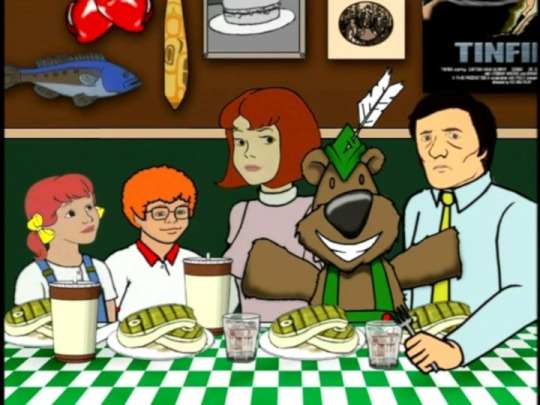
6. Shrabster Another great late season episode and another really experimental one. This one’s told from back to front, then we’re given the ending. It ends up working really well as it not only jacks up interest but the story itself is great. Asj it ends up turning out over the episode Dr. Quinn’s created the solution to world hunger: The shrabster, a hybrid of crab, shrimp and lobster. Grizzlebees, naturally wants it and after finding out Sparks didn’t actually own the rights, have Shanks, muprhy’s replacement, try and steal it, only for him to fall in love with the creature and spirit it away to give it a better life.. before shooting it in the end and eating it himself. We also get some good runners as Sparks starts speaking in slang and gets his neck rightfully snapped for it by Quinn, Stormy keeps eating shellfish despite being allergic, and we get the glory that is dan and don, two grizzlebees reperceives played by reed and thompson who are just an utter delight. I also ALMOST forgot the fucking announcer whose just fucking hilaroius the whole damn time with his various segways.
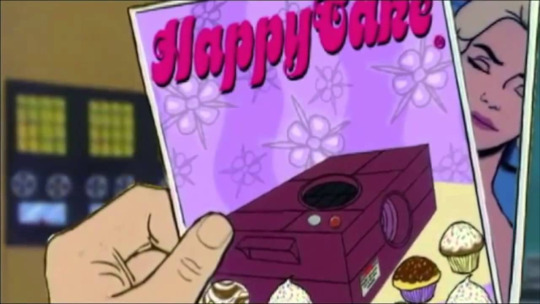
5. HappyCake An early classic and damn worthy with a simple, batshit premise, which as should be clear by now was Sealab’s Bread and Butter. Muprhy’s happycake oven has been stolen, so he sends Stormy (who knows about the captain’s bedwetting and thus must be silenced) Quinn and a fishman out to find it in the ocean. Turns out it’s Sparks, in a character defining episode, fault as he’s working on world domination, and thus is working on driving murphy insane and thus stole it. He and marco discuss Marco becoming his henchman and getting metal teeth, Muprhy goes nuts, it’s a damn good time. Also a lot of talk of Michael Cain so that’s always a plus now I know who he is. And of course it has one of the series best lines period “Pudding can’t help the void inside” but it’ll help. Only this low because i’ts a bit structually messy compared to what’s to come and given it beat out two really damn good structurally episodes for this slot, that should say something.
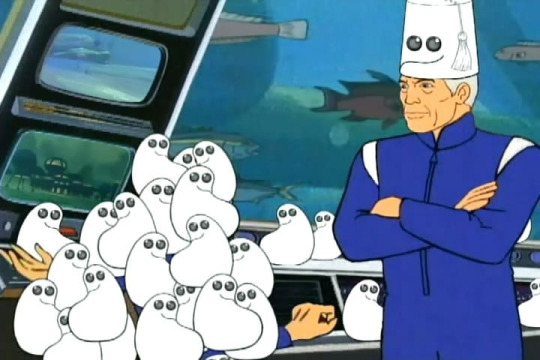
4. Hail Squishface! No best of list would be complete without this one. Once again the show banks itself on a simple premise: Captain Muprhy buys a white blob, a gloop, from a vendor and gives it liquor and gremlins style his little buddy multiplies and he soon gives them out to the crew. Everyon’es on board except Quinn.. whos naturally proven right ot be suspicious as the gloops methane output will doom them all and only muprhy, whose gone insane and is wearing squishface like a fez as you’d expect, wants them alive leading to what you’d expect: a flamethrower battle between muprhy and the crew with murphy decked out like a transformer. This one’s just endlessly creative, from the various glooptransformations to the finale to the gags, i’ts just great. The fart gags are also.. actually pretty funny, which given i’m not a fart gag guy most of the ttime, speaks to how well executed they are and use the gags of htem being fart machines. Also we get muprhy in a fez and that alone cements it as top 5 matieral.. but as for the top 3.
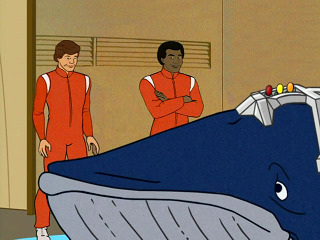
3. Moby Sick
Our last late season entry and the third to last episode of the show ever, this is top 3 for a reason, even above a classic like Hail Squishface. This one just has so many insane jokes packed in I forget quite a few despite them all being pretty damn great. The premise is dour: A whale named Avalard shows up in Sealab wanting to die, as he has whale cancer. Stormy recognizes him as the star of the show “Gotta Have that Dick”, even saying “I gotta have that dick!”.. which of course they have a loop of ellis saying in the credits he correctly assumes will haunt him for the rest of his days. And if a whale starring in a cheesy 90′s tgif sitcom wasn’t enough we get the best gag of the episode as Marco eats some of avalard’s whale cancer leading to an insnae kool aid style add
youtube
And of course Marco later puts on a Mayor F Whale outfit and eats the cancer.. and his way out of avalard. But before that we get fights over wether the whale should die or not, including the guy on the pro whale side stabbing him, Debby’s rambling nosense and Shanks, who first builds a wooden whale to put his brain in .. that promptly sinks “and all my puppies were in there!” and then goes on a far right pundit show and gets into a giant robot phsyical challenge.. which frankly we need more of. Tucker Carlson would be .0001 percent more tolerbale if he were getting his ass kicked in a gundam is what i’m saying.
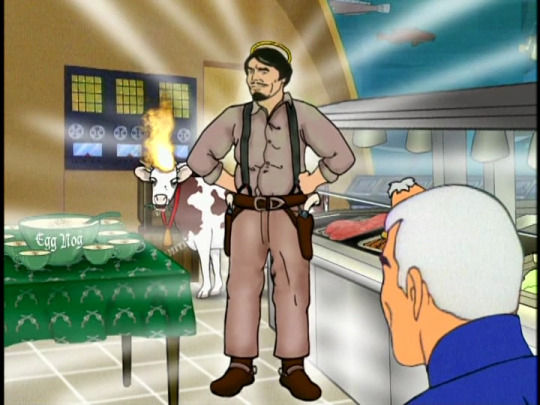
2. Feast of Alvis I’ll be brief here, which in an article where i’m already trying to be brief says a lot but since I JUST covered this one a few weeks ago for my best holiday special lists: Feast of Alvis is, like most of sealab, deeply creative, deeply batshit and deply fun as Muprhy pushes his violent frontier version of jesus on everyone, with predicably great results. I watch it every year for damn good reason, it has some of the series best gags, including “Cram a penny o nthere” And great satire about the supposed “War on christmas”. I’m only being so breif as I said pretty much all I had to say last time. Exxcept this: Adam Reed is a DAMN talented voice actor both as virjay (though in hindishgt he REALLY shoudln’t of been playing a hindu man, especially since otherwise the series actually cast poc), and in various rolls and kills it as alvis here. So what could top one of my faviorites? Wellll.
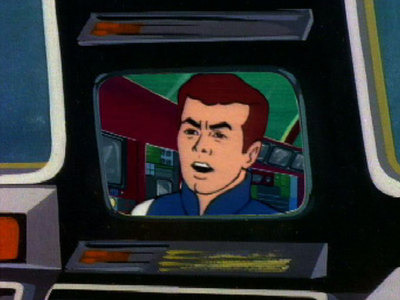
1. Chickmate Another early one and as should be clear the best. It incapsulates the series the best, has the funniest jokes packed into it’s 11 minutes and in general is just an outstanding episode that throughly defined the cast and their rolls and chemistry. Debbie’s biological clock is ticking and she wants to have a baby, and after mothering a dolphin dosen’t help decides one of the sealab men will be the father and auditions them. It goes as well as you’d expect: Muprhy thought she’d become his mommy, and not in a kinky way, Sparks provides one of the series best gags by giving her a modest proposal by jonathan twist and giving us the utter black comedy joy of him describing “ribs dripping off the bone”, Stormy’s tape gets interrupted by Hesh who clasically screams “Hesh wants some sex”, Marco freaks her out with his muscles and quinn seems sucessful before ultimately botching it and Debbie decides none of htem are worth it. We also get stormy’s untieontally racist and throughly stupid use of the term “Black debbie” to describe the other debbie, which he gets rightfully called out on. We also get this exchange as a result Quinn: What if everyone started calling you white stormy? Stormy: You mean there’s a .. black stormy Quinn: (Beat to take in the stupidity) no.
It’s funny, it’s clever, and it’s just damn fun. Easily the series best outing and the reason it became what it became. And overall.. the series is just really good. it’s on HBO Max if your curious, and if you haven’t vistied that lab underneath the sea. maybe i’ts time to. Goodbye, Goodbye, goodbye for now, until then.. play us out marco and debbie.
youtube
#adam reed#sealab 2021#archer#cartoon network#adult swim#captain murphy#harry goz#tornado shanks#debbie#stormy waters#sparks#marco#dr quinn#new years
10 notes
·
View notes
Photo
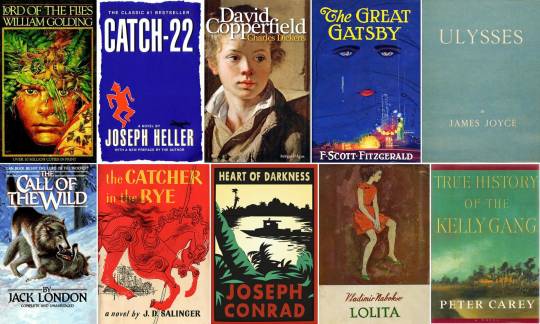
The 100 best novels written in English: the full list
After two years of careful consideration, Robert McCrum has reached a verdict on his selection of the 100 greatest novels written in English. Take a look at his list.
1. The Pilgrim’s Progress by John Bunyan (1678)
A story of a man in search of truth told with the simple clarity and beauty of Bunyan’s prose make this the ultimate English classic.
2. Robinson Crusoe by Daniel Defoe (1719)
By the end of the 19th century, no book in English literary history had enjoyed more editions, spin-offs and translations. Crusoe’s world-famous novel is a complex literary confection, and it’s irresistible.
3. Gulliver’s Travels by Jonathan Swift (1726)
A satirical masterpiece that’s never been out of print, Jonathan Swift’s Gulliver’s Travels comes third in our list of the best novels written in English
4. Clarissa by Samuel Richardson (1748)
Clarissa is a tragic heroine, pressured by her unscrupulous nouveau-riche family to marry a wealthy man she detests, in the book that Samuel Johnson described as “the first book in the world for the knowledge it displays of the human heart.”
5. Tom Jones by Henry Fielding (1749)
Tom Jones is a classic English novel that captures the spirit of its age and whose famous characters have come to represent Augustan society in all its loquacious, turbulent, comic variety.
6. The Life and Opinions of Tristram Shandy, Gentleman by Laurence Sterne (1759)
Laurence Sterne’s vivid novel caused delight and consternation when it first appeared and has lost little of its original bite.
7. Emma by Jane Austen (1816)
Jane Austen’s Emma is her masterpiece, mixing the sparkle of her early books with a deep sensibility.
8. Frankenstein by Mary Shelley (1818)
Mary Shelley’s first novel has been hailed as a masterpiece of horror and the macabre.
9. Nightmare Abbey by Thomas Love Peacock (1818)
The great pleasure of Nightmare Abbey, which was inspired by Thomas Love Peacock’s friendship with Shelley, lies in the delight the author takes in poking fun at the romantic movement.
10. The Narrative of Arthur Gordon Pym of Nantucket by Edgar Allan Poe (1838)
Edgar Allan Poe’s only novel – a classic adventure story with supernatural elements – has fascinated and influenced generations of writers.
11. Sybil by Benjamin Disraeli (1845)
The future prime minister displayed flashes of brilliance that equalled the greatest Victorian novelists.
12. Jane Eyre by Charlotte Brontë (1847)
Charlotte Brontë’s erotic, gothic masterpiece became the sensation of Victorian England. Its great breakthrough was its intimate dialogue with the reader.
13. Wuthering Heights by Emily Brontë (1847)
Emily Brontë’s windswept masterpiece is notable not just for its wild beauty but for its daring reinvention of the novel form itself.
14. Vanity Fair by William Thackeray (1848)
William Thackeray’s masterpiece, set in Regency England, is a bravura performance by a writer at the top of his game.
15. David Copperfield by Charles Dickens (1850)
David Copperfield marked the point at which Dickens became the great entertainer and also laid the foundations for his later, darker masterpieces.
16. The Scarlet Letter by Nathaniel Hawthorne (1850)
Nathaniel Hawthorne’s astounding book is full of intense symbolism and as haunting as anything by Edgar Allan Poe.
17. Moby-Dick by Herman Melville (1851)
Wise, funny and gripping, Melville’s epic work continues to cast a long shadow over American literature.
18. Alice’s Adventures in Wonderland by Lewis Carroll (1865)
Lewis Carroll’s brilliant nonsense tale is one of the most influential and best loved in the English canon.
19. The Moonstone by Wilkie Collins (1868)
Wilkie Collins’s masterpiece, hailed by many as the greatest English detective novel, is a brilliant marriage of the sensational and the realistic.
20. Little Women by Louisa May Alcott (1868-9)
Louisa May Alcott’s highly original tale aimed at a young female market has iconic status in America and never been out of print.
21. Middlemarch by George Eliot (1871-2)
This cathedral of words stands today as perhaps the greatest of the great Victorian fictions.
22. The Way We Live Now by Anthony Trollope (1875)
Inspired by the author’s fury at the corrupt state of England, and dismissed by critics at the time, The Way We Live Now is recognised as Trollope’s masterpiece.
23. The Adventures of Huckleberry Finn by Mark Twain (1884/5)
Mark Twain’s tale of a rebel boy and a runaway slave seeking liberation upon the waters of the Mississippi remains a defining classic of American literature.
24. Kidnapped by Robert Louis Stevenson (1886)
A thrilling adventure story, gripping history and fascinating study of the Scottish character, Kidnapped has lost none of its power.
25. Three Men in a Boat by Jerome K Jerome (1889)
Jerome K Jerome’s accidental classic about messing about on the Thames remains a comic gem.
26. The Sign of Four by Arthur Conan Doyle (1890)
Sherlock Holmes’s second outing sees Conan Doyle’s brilliant sleuth – and his bluff sidekick Watson – come into their own.
27. The Picture of Dorian Gray by Oscar Wilde (1891)
Wilde’s brilliantly allusive moral tale of youth, beauty and corruption was greeted with howls of protest on publication.
28. New Grub Street by George Gissing (1891)
George Gissing’s portrayal of the hard facts of a literary life remains as relevant today as it was in the late 19th century.
29. Jude the Obscure by Thomas Hardy (1895)
Hardy exposed his deepest feelings in this bleak, angry novel and, stung by the hostile response, he never wrote another.
30. The Red Badge of Courage by Stephen Crane (1895)
Stephen Crane’s account of a young man’s passage to manhood through soldiery is a blueprint for the great American war novel.
31. Dracula by Bram Stoker (1897)
Bram Stoker’s classic vampire story was very much of its time but still resonates more than a century later.
32. Heart of Darkness by Joseph Conrad (1899)
Joseph Conrad’s masterpiece about a life-changing journey in search of Mr Kurtz has the simplicity of great myth.
33. Sister Carrie by Theodore Dreiser (1900)
Theodore Dreiser was no stylist, but there’s a terrific momentum to his unflinching novel about a country girl’s American dream.
34. Kim by Rudyard Kipling (1901)
In Kipling’s classic boy’s own spy story, an orphan in British India must make a choice between east and west.
35. The Call of the Wild by Jack London (1903)
Jack London’s vivid adventures of a pet dog that goes back to nature reveal an extraordinary style and consummate storytelling.
36. The Golden Bowl by Henry James (1904)
American literature contains nothing else quite like Henry James’s amazing, labyrinthine and claustrophobic novel.
37. Hadrian the Seventh by Frederick Rolfe (1904)
This entertaining if contrived story of a hack writer and priest who becomes pope sheds vivid light on its eccentric author – described by DH Lawrence as a “man-demon”.
38. The Wind in the Willows by Kenneth Grahame (1908)
The evergreen tale from the riverbank and a powerful contribution to the mythology of Edwardian England.
39. The History of Mr Polly by HG Wells (1910)
The choice is great, but Wells’s ironic portrait of a man very like himself is the novel that stands out.
40. Zuleika Dobson by Max Beerbohm (1911)
The passage of time has conferred a dark power upon Beerbohm’s ostensibly light and witty Edwardian satire.
41. The Good Soldier by Ford Madox Ford (1915)
Ford’s masterpiece is a searing study of moral dissolution behind the facade of an English gentleman – and its stylistic influence lingers to this day.
42. The Thirty-Nine Steps by John Buchan (1915)
John Buchan’s espionage thriller, with its sparse, contemporary prose, is hard to put down.
43. The Rainbow by DH Lawrence (1915)
The Rainbow is perhaps DH Lawrence’s finest work, showing him for the radical, protean, thoroughly modern writer he was.
44. Of Human Bondage by W Somerset Maugham (1915)
Somerset Maugham’s semi-autobiographical novel shows the author’s savage honesty and gift for storytelling at their best.
45. The Age of Innocence by Edith Wharton (1920)
The story of a blighted New York marriage stands as a fierce indictment of a society estranged from culture.
46. Ulysses by James Joyce (1922)
This portrait of a day in the lives of three Dubliners remains a towering work, in its word play surpassing even Shakespeare.
47. Babbitt by Sinclair Lewis (1922)
What it lacks in structure and guile, this enthralling take on 20s America makes up for in vivid satire and characterisation.
48. A Passage to India by EM Forster (1924)
EM Forster’s most successful work is eerily prescient on the subject of empire.
49. Gentlemen Prefer Blondes by Anita Loos (1925)
A guilty pleasure it may be, but it is impossible to overlook the enduring influence of a tale that helped to define the jazz age.
50. Mrs Dalloway by Virginia Woolf (1925)
Woolf’s great novel makes a day of party preparations the canvas for themes of lost love, life choices and mental illness.
51. The Great Gatsby by F Scott Fitzgerald (1925)
Fitzgerald’s jazz age masterpiece has become a tantalising metaphor for the eternal mystery of art.
52. Lolly Willowes by Sylvia Townsend Warner (1926)
A young woman escapes convention by becoming a witch in this original satire about England after the first world war.
53. The Sun Also Rises by Ernest Hemingway (1926)
Hemingway’s first and best novel makes an escape to 1920s Spain to explore courage, cowardice and manly authenticity.
54. The Maltese Falcon by Dashiell Hammett (1929)
Dashiell Hammett’s crime thriller and its hard-boiled hero Sam Spade influenced everyone from Chandler to Le Carré.
55. As I Lay Dying by William Faulkner (1930)
The influence of William Faulkner’s immersive tale of raw Mississippi rural life can be felt to this day.
56. Brave New World by Aldous Huxley (1932)
Aldous Huxley’s vision of a future human race controlled by global capitalism is every bit as prescient as Orwell’s more famous dystopia.
57. Cold Comfort Farm by Stella Gibbons (1932)
The book for which Gibbons is best remembered was a satire of late-Victorian pastoral fiction but went on to influence many subsequent generations.
58. Nineteen Nineteen by John Dos Passos (1932)
The middle volume of John Dos Passos’s USA trilogy is revolutionary in its intent, techniques and lasting impact.
59. Tropic of Cancer by Henry Miller (1934)
The US novelist’s debut revelled in a Paris underworld of seedy sex and changed the course of the novel – though not without a fight with the censors.
60. Scoop by Evelyn Waugh (1938)
Evelyn Waugh’s Fleet Street satire remains sharp, pertinent and memorable.
61. Murphy by Samuel Beckett (1938)
Samuel Beckett’s first published novel is an absurdist masterpiece, a showcase for his uniquely comic voice.
62. The Big Sleep by Raymond Chandler (1939)
Raymond Chandler’s hardboiled debut brings to life the seedy LA underworld – and Philip Marlowe, the archetypal fictional detective.
63. Party Going by Henry Green (1939)
Set on the eve of war, this neglected modernist masterpiece centres on a group of bright young revellers delayed by fog.
64. At Swim-Two-Birds by Flann O’Brien (1939)
Labyrinthine and multilayered, Flann O’Brien’s humorous debut is both a reflection on, and an exemplar of, the Irish novel.
65. The Grapes of Wrath by John Steinbeck (1939)
One of the greatest of great American novels, this study of a family torn apart by poverty and desperation in the Great Depression shocked US society.
66. Joy in the Morning by PG Wodehouse (1946)
PG Wodehouse’s elegiac Jeeves novel, written during his disastrous years in wartime Germany, remains his masterpiece.
67. All the King’s Men by Robert Penn Warren (1946)
A compelling story of personal and political corruption, set in the 1930s in the American south.
68. Under the Volcano by Malcolm Lowry (1947)
Malcolm Lowry’s masterpiece about the last hours of an alcoholic ex-diplomat in Mexico is set to the drumbeat of coming conflict.
69. The Heat of the Day by Elizabeth Bowen (1948)
Elizabeth Bowen’s 1948 novel perfectly captures the atmosphere of London during the blitz while providing brilliant insights into the human heart.
70. Nineteen Eighty-Four by George Orwell (1949)
George Orwell’s dystopian classic cost its author dear but is arguably the best-known novel in English of the 20th century.
71. The End of the Affair by Graham Greene (1951)
Graham Greene’s moving tale of adultery and its aftermath ties together several vital strands in his work.
72. The Catcher in the Rye by JD Salinger (1951)
JD Salinger’s study of teenage rebellion remains one of the most controversial and best-loved American novels of the 20th century.
73. The Adventures of Augie March by Saul Bellow (1953)
In the long-running hunt to identify the great American novel, Saul Bellow’s picaresque third book frequently hits the mark.
74. Lord of the Flies by William Golding (1954)
Dismissed at first as “rubbish & dull”, Golding’s brilliantly observed dystopian desert island tale has since become a classic.
75. Lolita by Vladimir Nabokov (1955)
Nabokov’s tragicomic tour de force crosses the boundaries of good taste with glee.
76. On the Road by Jack Kerouac (1957)
The creative history of Kerouac’s beat-generation classic, fuelled by pea soup and benzedrine, has become as famous as the novel itself.
77. Voss by Patrick White (1957)
A love story set against the disappearance of an explorer in the outback, Voss paved the way for a generation of Australian writers to shrug off the colonial past.
78. To Kill a Mockingbird by Harper Lee (1960)
Her second novel finally arrived this summer, but Harper Lee’s first did enough alone to secure her lasting fame, and remains a truly popular classic.
79. The Prime of Miss Jean Brodie by Muriel Spark (1960)
Short and bittersweet, Muriel Spark’s tale of the downfall of a Scottish schoolmistress is a masterpiece of narrative fiction.
80. Catch-22 by Joseph Heller (1961)
This acerbic anti-war novel was slow to fire the public imagination, but is rightly regarded as a groundbreaking critique of military madness.
81. The Golden Notebook by Doris Lessing (1962)
Hailed as one of the key texts of the women’s movement of the 1960s, this study of a divorced single mother’s search for personal and political identity remains a defiant, ambitious tour de force.
82. A Clockwork Orange by Anthony Burgess (1962)
Anthony Burgess’s dystopian classic still continues to startle and provoke, refusing to be outshone by Stanley Kubrick’s brilliant film adaptation.
83. A Single Man by Christopher Isherwood (1964)
Christopher Isherwood’s story of a gay Englishman struggling with bereavement in LA is a work of compressed brilliance.
84. In Cold Blood by Truman Capote (1966)
Truman Capote’s non-fiction novel, a true story of bloody murder in rural Kansas, opens a window on the dark underbelly of postwar America.
85. The Bell Jar by Sylvia Plath (1966)
Sylvia Plath’s painfully graphic roman à clef, in which a woman struggles with her identity in the face of social pressure, is a key text of Anglo-American feminism.
86. Portnoy’s Complaint by Philip Roth (1969)
This wickedly funny novel about a young Jewish American’s obsession with masturbation caused outrage on publication, but remains his most dazzling work.
87. Mrs Palfrey at the Claremont by Elizabeth Taylor (1971)
Elizabeth Taylor’s exquisitely drawn character study of eccentricity in old age is a sharp and witty portrait of genteel postwar English life facing the changes taking shape in the 60s.
88. Rabbit Redux by John Updike (1971)
Harry “Rabbit” Angstrom, Updike’s lovably mediocre alter ego, is one of America’s great literary protoganists, up there with Huck Finn and Jay Gatsby.
89. Song of Solomon by Toni Morrison (1977)
The novel with which the Nobel prize-winning author established her name is a kaleidoscopic evocation of the African-American experience in the 20th century.
90. A Bend in the River by VS Naipaul (1979)
VS Naipaul’s hellish vision of an African nation’s path to independence saw him accused of racism, but remains his masterpiece.
91. Midnight’s Children by Salman Rushdie (1981)
The personal and the historical merge in Salman Rushdie’s dazzling, game-changing Indian English novel of a young man born at the very moment of Indian independence.
92. Housekeeping by Marilynne Robinson (1981)
Marilynne Robinson’s tale of orphaned sisters and their oddball aunt in a remote Idaho town is admired by everyone from Barack Obama to Bret Easton Ellis.
93. Money: A Suicide Note by Martin Amis (1984)
Martin Amis’s era-defining ode to excess unleashed one of literature’s greatest modern monsters in self-destructive antihero John Self.
94. An Artist of the Floating World by Kazuo Ishiguro (1986)
Kazuo Ishiguro’s novel about a retired artist in postwar Japan, reflecting on his career during the country’s dark years, is a tour de force of unreliable narration.
95. The Beginning of Spring by Penelope Fitzgerald (1988)
Fitzgerald’s story, set in Russia just before the Bolshevik revolution, is her masterpiece: a brilliant miniature whose peculiar magic almost defies analysis.
96. Breathing Lessons by Anne Tyler (1988)
Anne Tyler’s portrayal of a middle-aged, mid-American marriage displays her narrative clarity, comic timing and ear for American speech to perfection.
97. Amongst Women by John McGahern (1990)
This modern Irish masterpiece is both a study of the faultlines of Irish patriarchy and an elegy for a lost world.
98. Underworld by Don DeLillo (1997)
A writer of “frightening perception”, Don DeLillo guides the reader in an epic journey through America’s history and popular culture.
99. Disgrace by JM Coetzee (1999)
In his Booker-winning masterpiece, Coetzee’s intensely human vision infuses a fictional world that both invites and confounds political interpretation.
100. True History of the Kelly Gang by Peter Carey (2000)
Peter Carey rounds off our list of literary milestones with a Booker prize-winning tour-de-force examining the life and times of Australia’s infamous antihero, Ned Kelly.
Daily inspiration. Discover more photos at http://justforbooks.tumblr.com
71 notes
·
View notes
Text
The Hunchback of Notre Dame (1996)
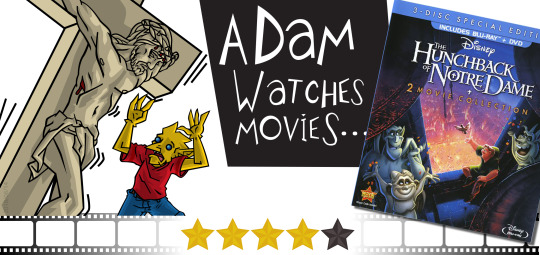
With a few tweaks, Disney’s The Hunchback of Notre Dame could be one of the studio's finest. As is, the movie is strong but suffers from out of place, awkward humor throughout. Let’s preface this review by adding that we’re evaluating the animated film and just the film. If you're looking for an accurate adaptation of the book, this isn't it. If that's what you want, you've got no business here.
In 1482 Paris, Judge Claude Frollo (voiced by Tony Jay) is a malicious, unjust, and xenophobic despot. High in the towers of Notre Dame lives his adopted “son”, a deformed hunchback cruelly named Quasimodo (voiced by Tom Hulce). Alone inside the stone walls of the cathedral, he dreams of belonging to the outside world. When a gypsy named Esmeralda (Demi Moore) captures Frollo's heart, the judge’s lust and rage threaten all of Paris.
This film sets itself apart from other Disney classics with its sinister and tragic tone. Quasimodo is deformed and grotesque. Even with a kind heart, he stands no chance with Esmeralda - particularly while she and the Captain of the Guard, Phoebus (Kevin Kline) make eyes at each other. Several tense sequences take dark turns as Frollo expresses his racism towards the Romani (Gypsy) and willingness to do anything in order to pass the blame he should bear onto others. Quasimodo is frequently subjected to cruelty. The downtrodden are frequently stomped on. There’s a tragic undertone as Quasimodo speaks to his only friends, stone statues he "brings to life" with his imagination. The majestic skyline of 15th century Paris, towering cathedral representing both a prison and hope to those seeking sanctuary, it’s powerful stuff.
This film benefits from a truly great villain. You love to hate Frollo. Though he's been changed from archdeacon to a judge, he remains edgy. You might've seen other children's stories proclaiming the importance of not judging others on their appearance but this character makes The Hunchback of Notre Dame stands out and more suitable for older audiences than little kids. The Judge paints himself as a devout Christian but commits horrid crimes. While nothing is ever explicitly said, a vivid scene in which he imagines Esmeralda dancing shows his lust for her. He's irredeemably evil but human.
The city is wonderfully brought to life through Quasimodo's viewpoint. We've got memorable songs with tunes unique among Disney's roster. The voice actors are excellent, the message great, climax breathtaking. What's not to like? The gargoyles. This is not a comedy but it doesn't stop Charles Kimbrough, Jason Alexander, and Mary Wickes' stone buffoons from trying to make you laugh. Crotch shots, fart jokes, a gargoyle wanting to romance a goat, cross-dressing gags all bring the picture to a screeching halt. They give the crappy robot from Treasure Planet a run for its money as “worst and unnecessary comedic sidekick in an animated film”. I wish the film had predated home video so it could've been “lost” and then “found” again years later with some footage “unfortunately missing”.
The Hunchback of Notre Dame is not frequently mentioned among Walt Disney's essentials, which is a shame. It contains heart-wrenching drama, powerful imagery, a moving story, and unforgettable moments. Visually, it's a knockout from the backgrounds to the character designs and atmosphere. It’s a movie so good the one flaw it has becomes that much harder to ignore. Don't let that keep you away from viewing (or revisiting) The Hunchback of Notre Dame. You may cringe when it gets "funny" but the rest is worth it. (On Blu-ray, June 5, 2015)
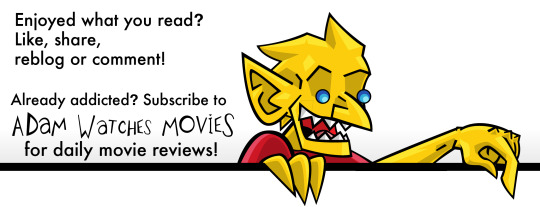
#TheHunchbackofNotreDame#Quasimodo#DIsneyMovies#DisneyFilms#movies#films#reviews#MovieReviews#FilmReviews#FilmCriticism#GaryTrousdale#KirkWise#TabMurphy#IreneMecchi#BobTzudiker#NoniWhite#JonathanRoberts#TomHulce#DemiMoore#TonyJay#KevinKline#PaulKandel#JasonAlexander#CharlesKimbrough#MaryWickes#DavidOgdenStiers#1996Movies#1996films
3 notes
·
View notes
Text
When most people hear the name, “Veronica Lake” usually one of three things comes to mind – that incredible peek-a-boo hair, the Film Noir’s with Alan Ladd or possibly Kim Basigner playing a Miss Lake lookalike in L.A. Confidential (1997) – fun fact, she won the Best Supporting Actress Oscar for that role. Although, with Veronica’s heyday being well over half a century old, that’s sadly usually as far as it goes.
However, with the Classic Hollywood Era being hugely timeless and forever coming back into fashion, the genre is becoming less of a niché subject and more Stars are on the public radar. If you’re a long time Vintage Lover like myself, you’ll be aware that unfortunately, a lot of our favourites don’t have many books written about them, or if they do, they’ve been out of print for a number of years and can be hard to find, or very expensive. Therefore, when I came across the news that Dean Street Press were publishing a reprint of Veronica’s Autobiography, which was first released in 1969, I was absolutely ecstatic! As most who know me are probably aware of my love for Blonde Bombshells, it may not be as well known that Veronica is my other favourite, after Marilyn.
There have only been two books published on Veronica, which I must add, astounds me – and one of them is this one which was co-written by ghost writer Donald Bain, who sadly passed away in October of 2017. The other is by Jeff Lenburg and I am fortunate enough to have both. However, Lenburg’s book is fairly controversial as he takes a lot of his information from Veronica’s mother, who claims a lot of detrimental things about her daughter – yet was estranged from her for many, many years. I think it’s actually being reprinted this summer and I will read it again, but would definitely advise new fans to stick to Veronica’s own words.
The republished version of Veronica’s Autobiography features a new cover with a stunning publicity photo of her in Ramrod (1947) which was directed by her then Husband, André de Toth. The book is a shiny paperback, with a non crease format, so even when you’ve finished reading, it will be in great condition and can take pride of place on your bookshelf! At 215 pages and 27 chapters, it’s not a huge length, but definitely a substantial read and full of personal anecdotes from the Golden Age of Hollywood.
Broadcaster and writer, Eddie Muller adds a new Introduction and his following words really stuck with me, their relevancy still to this day does not go unnoticed,
“I’ll point out instead that while the public has granted Sterling Hayden, a legendary boozer and hash-head, a legacy as a heroic, larger-than-life iconoclast, it has branded Lake’s life after Hollywood a steady downward spiral of abasement, worthy of only pity. Blame a cultural double standard that applauds reckless rebellion in men but shames it in women.”
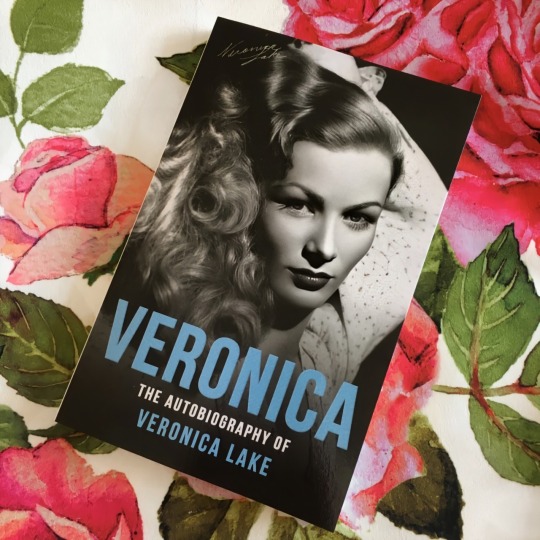
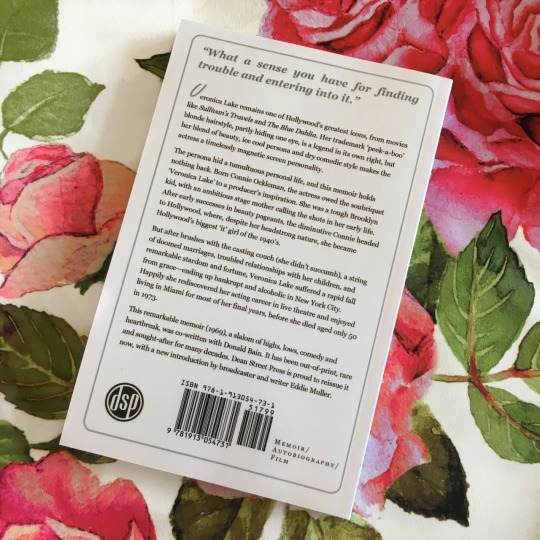
As the chapters do not have titles, I’ve decided to write down a snippet of information which sums up the pivotal points and various timelines in each section.
______________________________________________________________________________
Chapter 1:
– Starts in 1938 and traces Veronica’s move to Hollywood with her mother, step-father and cousin on the 4th of July. Veronica enrolls in the Bliss Hayden School of Acting and has her first role in a movie as an extra in RKO’s Sorority House (1939).
Chapter 2:
– Veronica’s signature peek-a-boo hairstyle is unintentionally created on the set of Forty Little Mothers (1940) by Director, Busby Berkeley who stated, “I still say let it fall. It distinguishes her from the rest”.
Chapter 3:
– Director, Freddie Wilcox sets up Veronica’s first Screen Test, whilst at home her step-father suffers a collapsed lung.
Chapter 4:
– Veronica joins the iconic William Morris Agency and recounts her knowledge of the infamous Hollywood Casting Couch and how she turned away from the many advances.
Chapter 5:
– Veronica meets her first husband, John Detlie and has her named changed by Producer, Arthur Hornblow Jr., who, after a second Screen Test, decides to cast her as Sally Vaughn in her breakout movie, I Wanted Wings (1941).
Chapter 6:
– Focuses on the location filming of I Wanted Wings (1941) from August 26th 1940 in San Antonio, Texas.
Chapter 7:
– Continues filming in Hollywood for I Wanted Wings (1941) and elopes to marry her first husband, John Detlie.
Chapter 8:
– Veronica discusses the first 8 years of her childhood and her move to Florida in her teen years and the two schools she attended in Montreal and Miami.
Chapter 9:
– Recounts various appearances in Miami Beauty Pageants as a teenager.
Chapter 10:
– Returns to 1941 with the release of I Wanted Wings (1941) and focuses on the worldwide phenomenon of the famous hair. Also finishes with Director Preston Sturges hiring Veronica for the role of The Girl in Sullivan’s Travels (1941).
Chapter 11:
Veronica shares the news of her first pregnancy with her mother and how her third trimester would coincide with the physical demands of filming Sullivan’s Travels (1941).
Chapter 12:
– Covers the filming of Sullivan’s Travels (1941) from May 12th 1941 and the revelation of Veronica’s pregnancy. It’s simply incredible when watching the film all these years later to come to the realization that she was between six to eight months pregnant!
Chapter 13: – The filming of This Gun For Hire (1942) and The Glass Key (1942).
Chapter 14:
– The filming of I Married A Witch (1942), So Proudly We Hail! (1943) and The Hour Before The Dawn (1944). Veronica also discusses the deterioration of her marriage and the tragic loss of her second baby, Anthony, who died a week after being born two months prematurely.
Chapter 15:
– Veronica divorces John and retells various anecdotes of the Hollywood Lifestyle in it’s heyday in the 1940s.
Chapter 16:
– Veronica discusses the filming of Star Spangled Rhythm (1942) and also her dating history during this period. She shares some fascinating stories of various celebrity anecdotes which include such Stars as, Errol Flynn, Katharine Hepburn, Howard Hughes and Gary Cooper.
Chapter 17:
– The filming of Bring On The Girls (1945), Duffy’s Tavern (1946) and Hold That Blonde! (1945). Veronica recalls marrying her second husband, Andre de Toth and shares a moving story from her visit to The White House in January 1945.
Chapter 18:
– The filming of Miss Susie Slagles (1946), Out Of This World (1945), Ramrod (1946), The Blue Dahlia (1946), Saigon (1947) and The Sainted Sisters (1948). Veronica and Andre expand their family as she has her third baby, a boy named Michael. She also talks about her and Andre obtaining their Pilot Licenses and how the death of her step-dad deeply affected her.
Chapter 19:
– Features a highly entertaining story of Veronica flying her plane, whilst carrying her forth child, in her fifth month of pregnancy. With her on board is her secretary Marge, who up until then had never flown before.
Chapter 20:
– Veronica gives birth to her forth baby, a girl named Diana and talks about the turmoil of her relationship with her mother, who decided to sue her for, “lack of filial love and responsibility” and over $17,000.
Chapter 21:
– The filming of Slattery’s Hurricane (1949) and Stronghold (1951). Veronica discusses her frustration with Andre’s prolific spending, which results in them filing for bankruptcy and ultimately, the deterioration of their marriage.
Chapter 22:
– Veronica moves to New York in 1951 and continues her acting career through various television appearances and the stage. She enters her third marriage to husband, Joe McCarthy, which she admits was volatile from the start and they divorce after just four years, in September 1959.
Chapter 23:
– Covers the years 1959 through to 1961. Veronica discusses her time taking a job as a cocktail waitress – which contrary to popular belief, she actually quite enjoyed. She also talks about the traumatic accident which resulted in a severely broken ankle, which caused her inability to act for two years.
Chapter 24:
– Delves into her relationship with Andy Elickson, a Merchant Seaman, who she met during her time working in the Martha Washington Hotel and focuses on the period between 1961 and 1966. She also writes about a high note in her stage career; appearing in Best Foot Forward in 1963.
Chapter 25:
– Veronica discusses her move to Miami from New York in 1966.
Chapter 26:
– The filming of Footsteps In The Snow (1966) and Flesh Feast (1970) which was then known as Time Is Terror and was originally shot in 1967.
Chapter 27:
– Ends in October 1967 with Veronica discussing her reading performance of The World of Carl Sandburg, which she describes as one of the, “finest moments” of her life.
______________________________________________________________________________
Veronica’s words are full of honesty, she does not sugar-coat her flaws and her anecdotes convey a great sense of humbleness towards her career and lots of self criticism to her talent, the latter which saddens me. I’ve noticed many of the great Stars rarely seem to have any belief in themselves. If only they could see how loved and appreciated they truly are. However, her loyalty and generosity towards her close friends and even acquaintances does not go unnoticed. It’s refreshing to see her be able to share her own story, without various opinions and conspiracies that have grown over the years being included.
Overall, there’s only two downsides that springs to mind. Firstly, as the book was originally published in 1969 and finishes at the end of 1967, we’re missing the six final years of her fascinating life and tragically nothing can be done to change this. Of course no one is at fault, it’s just a shame that those last years will remain mostly a mystery to us. It would have been wonderful to read about her time in England. Lastly, in the original edition, a number of pages featured very rare photos of Veronica throughout her years, including her own comments. Sadly, only a small version of the cover photo reappears at the end of the newly republished book. I’m assuming this is down to cost and or copyright, but it would be nice to see these rare treasures reappear in the latest edition for fans that are not fortunate enough to also own an original copy.
Ultimately, Veronica always maintains her true self and comes across as not a Screen Icon, but just like one of us – albeit with some extraordinary Hollywood stories. She’s simply, and I mean this in the most complimentary way – a human being. It’s been almost a decade since I discovered Veronica, eight years in fact and I for one have not only became even more endeared to Miss Lake, but, I have also developed a warm space in my heart for my fellow 5’2″ little lady, Miss Connie/Ronni Keane.
Lastly, a huge thank you to Dean Street Press for believing in the popularity of Veronica and so wonderfully reprinting hers and Donald Bain’s special words for us all to enjoy.
For anyone who wants to see more of Veronica, I’ve amassed a fairly large archive of photos over the years which can be viewed on my blog devoted entirely to her; missveronicalakes.
Follow me at;
BLOGLOVIN
INSTAGRAM
TUMBLR
TWITTER
YOUTUBE
For inquiries or collaborations contact me at;
Veronica: The Autobiography of Veronica Lake; Book Review. When most people hear the name, "Veronica Lake" usually one of three things comes to mind - …
#1940s#1950s#1960s#autobiography#blonde bombshell#book review#classic hollywood#constance keane#donald bain#femme fatale#icon#legend#old hollywood#peek-a-boo blonde#veronica lake#vintage
30 notes
·
View notes
Text
Why We Rise (A Meditation on Humanity)
by Adam Kenichi Wekarski

The time has come for me to write about Christopher Nolan’s Batman Trilogy (and why it is the most important cinematic franchise of our time). *Please purchase & view the franchise in it’s entirety prior to reading this independent essay. Spoilers are No Fun for Anyone. SUPPORT The STORYTELLERS*
Although it’s a story derived from a comic book, this is not a movie franchise to be taken lightly (or for granted for that matter). Christopher Nolan’s film, “Memento” was the first work he had accomplished that I had ever seen (back in the Blockbuster days - ahem, VHS RULES!) and it is still spinnin’ my mind after all this time. Christopher Nolan ALWAYS delivers some form of ground-breaking excellence in his work - his ‘Dark Knight’ Franchise is no exception.
When one thinks of Batman, it’s very easy to consider the various forms (literature, animation, cinema, video games, etc) of said character (God Bless You, Adam West! R.I.P., Good Sir!). SO many INCREDIBLE & [BEYOND] TALENTED folks have, not only performed as the character, but have helped in shaping this character’s Monumental & Positive Imprint on contemporary society (worldwide).
I still believe Christian Bale is one of the most under-appreciated performers of our time. I first saw him in the Dark Comedy, “American Psycho” (DUDE! Holy Smack-a-RONi! Totally Bonkers & Viciously frightening). I still can’t believe he did not receive an Academy Award nomination for that performance (for shame, HollyWould). As much as I love Tim Robbins (SHAWSHANK, BaBY!), Christian Bale is one of the greatest actors of all time (100% WITHOUT A DOUBT). He plays Bruce Wayne PERFECTLY (TOTALLY the BEST Bruce Wayne OF ALL TIME! DONE! NO ARGUMENT! END-ALL-BE-ALL..”..Been there, Done that - got the album, Bought the Tee-shirt..NEXT” (Ricky Gervais, The Office [UK]). CHRISTIAN BALE DESERVED AN ACADEMY AWARD FOR “The Dark Knight Rises” - I’M SAYING IT - HE DID SUCH A PERFECT PERFORMANCE in (Yeah ALL Caps) this entire franchise. I need to address that because so many folks seemed to be swept-up in their own distractions as viewers (Yeah we get it, he disguised his voice with a growl - get over it, ya’ll). He seems to be a good person (‘seems’ being the operative word) & I’ve read about his efforts in his life off-screen (You are a Good Man, Sir) when the cameras are not around. I have a belief that it’s good for people to appreciate those ‘moments-of-truth’ more often (just one person’s opinion, take it or leave it).
Speaking of ‘moments-of-truth’ - This story (spanning across three EPIC films) is the ultimate moment-of-truth for Sir Christopher Nolan (Why Not?; He actually is CBE apparently; Respect) and his AMAZING Production TEAM’s collective efforts. So many people put their well-being on the line to make these stories happen (some even, their lives, Rest in Peace) and I believe this franchise deserves ALL of the Success & Recognition & Praise (and honestly, Time) for the awe-inspiring efforts put forth (in regards to cinematic storytelling). This is a franchise for the fans (due to how well it honors the source material & simultaneously manages to elevate the art-form).
Bruce Wayne is one of the most important modern characters of our time. Not since the days of Jesus Christ, himself, has there even been someone who sparked a universal impact (sorry ‘Supes’ - You & Ol’ ‘Batsy’ are Tied in my book) upon average people worldwide. Granted - Bruce Wayne is NO Jesus (there can only be one), however, his life’s journey is a true Test of Faith, which is a universal lesson that I firmly believe Jesus Christ was attempting to spread in his message of good faith towards one another.

Bruce Wayne (played by Christian Bale & Gus Lewis, respectively), as it is now [mostly known], was born an heir to The Wayne Family, an age-old empire in modern society (Gotham City, U.S.A.). In Christopher Nolan’s particular take on this (now-classic) SuperHero story - Reality is the cinematic setting.
“Batman Begins” is Nolan’s homage to Richard Donner’s “Superman”, having been THE standard for comic book movies (since the late 1970’s if I’m not mistaken). Having obviously been a fan of Donner’s work (Gee, who isn’t?) - it’s an obvious source-of-influence for the first installment in Christopher Nolan’s Perfect Epic.
When I had first discovered the news that Christopher Nolan was Warner Bros. Studios’ choice for a brand new Batman reboot - I have to admit I was VERY optimistic. After having seen “Memento”, and his work with that incredible team - I was very, very optimistic that for ONCE the Batman universe was going to be actually depicted like it is in the comic books (at least the ‘80s Batman Comics - Hello Dark & Gritty Vibes). Considering the mental intensity of “Memento” (and how linear-storytelling-need-not-apply) - I was absolutely curious to see how well the story would finally be done on-screen (with all due respect to Tim Burton & Joel Schumacher & All previous efforts achieved in the known story-telling community). After all is said and done, this franchise is a ‘Grand Slam’.
Christopher Nolan’s version of Milton “Bill” Finger’s (Bob Kane took all of the credit for Bill’s work; for shame) story of Bruce Wayne/Batman is the most inspiring work I’ve seen achieved on the concept (and characters) to this day. With the initial tone set in the first film - we find a young Bruce Wayne as a child - simply playing in the Wayne family’s garden with his best (& childhood) friend (and one of the most important characters in the franchise): Rachel Dawes (played by Katie Holmes, Emma Lockhart, and Maggie Gyllenhaal, respectively). Bruce & Rachel establish the innocence of childhood (and of our main protagonist) with the playful phrase, “Finders Keepers” which is followed by young Bruce falling into an old dried-out well (which then traps him into a slight crevice, filled with Bats).
As we discover in this story, the symbol of Batman has a rather deeper meaning to Bruce Wayne than what had been initially expected (unless if you’re a fan of the comics). When the first film starts to take form, we find Bruce Wayne lost in the depths of ‘hell’ as an adult man. Having been an heir to a Family’s Kingdom (so-to-speak), Bruce Wayne had lost his Mother & Father; Martha & Thomas Wayne (SUCH Good People) at a tragically-early age, having their lives taken by a lost soul in the dark of night (a reality known, all-too-well, by our own collective experiences as a contemporary society).
Martha & Thomas Wayne establish the core values that help shape Bruce Wayne as an Individual. Their Leadership, their knowledge, their wisdom, their love (their faith). All of their finest attributes shine a light on how the community - the city of Gotham (and their actions as people) help shape said community. Without their Faith, Bruce Wayne’s immediate world probably wouldn’t have even been established for him (perhaps). It is that faith that is the driving force of this franchise, and the greatest tragedy of this film is, indeed, the blatant & cold-blooded murder of Martha & Thomas Wayne. Ya know, they were really good people in terms of their contributions to their household & community & their lives, and they truly cared about their impact on the world (in a greater sense).
With such care, they made important choices (that had an effect on everyone in Gotham, regardless of outlook). Choices that made a necessary difference in, not only their home, but in their overall world. Gotham may be fictional, but I will let the fantasy play and I will acknowledge the tremendous amount of detail put into these stories that went unnoticed in the initial ‘life’ of this franchise’s release. Having said that - Unless if memory serves inaccurate, this film received a lot of unwarranted criticism for the realistic depiction of modern violence (due to the UNGodly public shooting(s) that have been taking place in our country; I acknowledge the real-life tragedies, but also acknowledge the importance of artistic vision). I say unwarranted due to the fact that Christopher Nolan managed to hold up a mirror and we need to pay close attention (and look beyond the glamour & simulated violence), and this was accomplished well-before Todd Phillips’ incredible film “Joker” had been produced (which drew plenty of inspiration from Nolan’s signature style and Heath Ledger’s actual development of said character; Joker’s Journal).
At the core of this story is Faith.
Faith is what was instilled in Martha & Thomas Wayne (and their lessons with Bruce as a boy). Alfred Pennyworth (played Beautifully by Sir Michael Caine in a Nomination-worthy performance for Best Supporting Actor in my humble opinion) is the reinforcement to protect the Wayne Family’s Honor & Good Name. On the surface, Mr. Pennyworth is Bruce Wayne’s Butler, however, when he’s not maintaining the Wayne fortune, he is ‘the guiding light’ (no pun intended) in Bruce Wayne’s Journey (despite the efforts of various opposition). While Rutger Hauer (rest his soul; “BLIND FURY”!!! YES!) had set the tone for what was to come later in young Bruce Wayne’s life (at the funeral for Martha & Thomas Wayne) - it becomes abundantly clear that Bruce Wayne has quite the journey ahead of him in his life (with plenty of whom have pre-developed plans & agendas to seize Wayne Enterprises for their own gain).
Bruce Wayne, born of a Mother & Father, heir to “the throne” (as it were), and thriving billionaire, one day decides to leave it all behind. It’s a moment of internal crisis for our protagonist due to the severely traumatic act of witnessing the death of his own parents (while almost being murdered himself). I know a lot of people think Kal-El (aka ‘Superman’, aka ‘Clark Kent’) is the end-all be-all of Superheroes (myself included), however, after a retrospective look back at Christopher Nolan’s Dark Knight Trilogy it becomes abundantly clear just how much credit this franchise did NOT receive from the critics & the artistic community (Hi, Academy. I’m lookin’ at ya’ll). Despite the worldwide acclaim, I believe this franchise was well ahead of it’s time in terms of the most important aspect of the entire achievement - The Story.
This is a franchise fully-devoted to the story and that is a significant contributor to the success of this version of Batman. I grew up watching old reruns on TV of Adam West & Burt Ward going around and ‘CLEANING-SOME-CLOCKS’ as it were (POW! ZAM! KLAM! CHOWDAH!), and I always hold that version near-and-dear to my heart because I still think the early 1960’s version of Batman was really fun & really awesome & an absolute delight. Plain & simple. ..Granted - as time continued and the characterization of Bruce Wayne (and his alter-ego “Batman”; His Armor; His Protective Shield) had advanced & developed into a new ground (conceptually-speaking). The core values of who Bruce Wayne is, where he comes from, and Why he does [what he does] did not truly become profoundly-realized for me until I’d say when the Animated series (1990’s! DUDE still one of the best Animated Series I’ve ever seen; like ‘a fine wine of cartoons’). “The Mask of The Phantasm” is still one of the best Batman stories I’ve ever seen - Such an incredible origin story for Bruce Wayne - and definitely one of the best animated, full-length features I had ever seen as a kid (Not to discount Tim Burton’s gothic-induced-dream-like version of the knight’s tale).
With Christopher Nolan’s contribution to the overall storyline of Batman - we truly have a Masterpiece Trilogy before us (as audience members). Nolan’s take on Batman is truly like no other (even surpassing efforts that preceded the franchise) in that he actually provides a glimpse into what it would look like if the fantasy actually became a reality. Christopher Nolan achieves that goal (Ten-fold) with this trilogy.
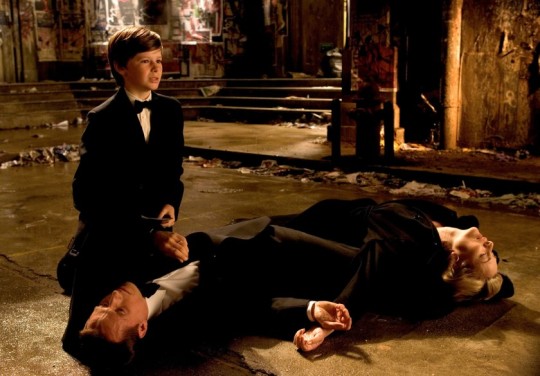
In the first film - what we know about Batman becomes hyper-realized with the emphasis on Bruce Wayne’s life in modern-day America (Gotham City being the quintessential metropolitan All-American city). An America that has succumbed to an overall tone of darkness & hopelessness (with the reality of tangible corruption & streets of truly deadly conditions) which has reached a pinnacle-of-suffering for the good people of Gotham (and perhaps, rippled outward into the rest of the world).
Jim Gordon (played PERFECTLY by Gary Oldman, one of the finest performing actors ever to be on screen), a symbol of Gotham’s defeated Law Enforcement, patrols the streets of Gotham City each night. Jim Gordon is one of the key individuals that Bruce Wayne reaches out towards (in his pre-Knight regalia) in the first stages of ‘Batman Begins’. Jim Gordon was the person who wrapped the coat around (a young) Bruce Wayne’s shoulders after his parents had been needlessly-murdered right before his very eyes. Jim Gordon was the one who kneeled to Bruce’s level, acknowledged his loss, and gave him that moment of kindness & warmth & honest-to-God decency. He acknowledged Bruce’s sorrow & loss with grace. He gave him a moment of simple human decency & kindness for the sake of kindness itself.
Jim Gordon’s kind gesture is merely a moment in time, which made all the difference for a young kid who just needed someone to simply be there for him. A moment that showed Bruce Wayne that Goodness & Human Decency can & does still exist in the world despite a traumatically-life-changing tragedy. Jim Gordon’s simple, nearly effortless act, is a sign that people Do honor good faith (and people who truly deserve it) and the good Do get rewarded.
I really like the character Bruce Wayne. I think he’s a better character than most that I’ve ever seen, especially since he actually has character. It’s a shame that people can not see beyond the surface to find the deeper meaning of this story. Bruce Wayne’s [incredible] journey takes place all over the world. When we find him in ‘..Begins’, he is locked up in the ominous mountains of Bhutan. His home now a desolate wasteland of an existence due to his loss. His tragedy (despite Jim Gordon’s act of kindness) had lead him astray and brought him across the other part of the world (only to discover what it truly means to suffer in poverty & hunger & pain & strife & darkness without any means of comfort). As the story unfolds, it becomes clear that Bruce’s path is the ‘path-of-most-resistance.’ Rather than succumb to a frivolous, meaningless, and hollow existence - Bruce Wayne took the path rarely taken. He chose his own path, to earn his own personal truth, his own story to be lived & known (and eventually discovered by Gotham City).

When Bruce meets an unusual individual by the name of ‘Ducard’ (aka Ra’s al Ghul; aka Liam Neeson; Also played simultaneously by the honorable Ken Watanabe, respectively) in his own ‘personal hell’, Ducard feeds into Bruce’s fall from the path of grace (and his spiritual confusion). Ra’s al Ghul/Ducard is only interested in one thing: controlling Bruce Wayne. As Ra’s al Ghul is the quintessential ‘Handler’, or ‘Hypnotist’ of Bruce Wayne in the training period for Bruce Wayne’s spiritual journey - it becomes evident with each effort from Wayne that Ra���s al Ghul represents The Devil (aka ‘The Prince of Darkness’, ‘Satan’, ‘Lucifer’; The ‘Shadow Side’ of Saturn; See “Yikes!”; See “YOWZA”; See “Hide Yo Kids, Hide Yo Wife”; No Disrespect To The Coven; See Not My Lord; See God Protect Me).
From the moment we first-see Ra’s al Ghul - he is shrouded in darkness - lurking in the shadows within each unseen corner of the world - the proverbial serpent of the shadows (so-to-say). In a manner of speaking, Ra’s al Ghul is merely one of many faces throughout the story that showcase the forces of darkness in this particular cinematic legacy (from the depths of darkness, here to possess the living). Ra’s al Ghul attempts to indoctrinate Bruce Wayne (in Bad Faith) in the Bhutanese abyss; a wasteland for the damned (and where the death of hope thrives amidst the stone-prison-walls). Despite Ra’s al Ghul’s efforts - Bruce Wayne not only proves to be the most-prominent under-study of the cult (while being initiated into a secret society; a clandestine fraternity; a subversive order of assassins following an ancient practice (unknown & unseen by the blissful light of day).
Bruce Wayne’s prominence during his training cycle with ‘The League of Shadows’ (an appropriate title) shows us that he surpasses even Ra’s al Ghul’s expectations: showing how the student becomes the teacher (by upholding an authentic approach to having a Personal Moral Code & Justice & Ethical Values). Bruce Wayne is not only faster, stronger, and smarter than Ra’s al Ghul - Bruce Wayne is also wiser. Due to Wayne’s parents (and his friendships) he truly is ‘the shining example’ of true justice that Ra’s al Ghul has yet to achieve in life (due to his obsessive wrath).
Having destroyed the League of Shadows’ initiation grounds & temple of darkness - Bruce Wayne LITERALLY SAVES RA’S AL GHUL’S LIFE. ‘True Colors’ does not even begin to define such a moment for our protagonist (that’s a true sign of Mercy).
Despite Bruce Wayne saving Ra’s al Ghul’s life, afterwards the dude STILL tries to come back and kill Bruce AND Gotham City (Showing how The Devil has No Mercy for Anything, Anyone, or Anywhere and is just flat-out unwilling to acknowledge when something good actually does happen). Granted, at the end of “Batman Begins” we discover how Martha and Thomas Wayne were murdered as a direct result of Ra’s al Ghul & The League of Shadows (and their hatred for all things Gotham City & Western Civilization). It’s a diabolical reveal that the devil holds nothing sacred in the sanctity of human life. The devil will literally kill an angel after having been saved by said angel. In fact, Bruce Wayne’s own personal brush with death is (tragically) a common concern of not only Alfred, but Lucius Fox (played exquisitely by one Morgan Freeman), a former Board-Member & former colleague of Thomas Wayne (prior to his passing).
Bruce shows us that good people typically make a lot of good friends and have good people looking out for one’s best interest (no matter their walk of life). The most awe-inspiring truth of Bruce Wayne/Batman is that his ‘best interest’ is preserving & honoring the good faith of his community and the people in his life (including his ancestors, mind-you, as well as the herculean guidance of one Alfred Pennyworth). Without friends - life goes nowhere - that’s a universal truth. Bruce Wayne nearly died so many times in this trilogy and I don’t think people appreciate that aspect of these movies. This is an individual who literally put his life on the line to save the soul of the city he loves (wanting nothing other than a good, normal, & happy life). I know people only fixate on ‘the How’, but I think ‘the Why’ is the most important element of Bruce Wayne’s fictional example.
Bruce Wayne (as all of us) exists for a reason. His life (albeit fictional) does have an important purpose in the grand scheme of things (as one puts it).
Of course, this reason is emphasized (more & more) by his best friend, Rachel Dawes (among others). It’s a shame that Katie Holmes did not portray Rachel Dawes in both of the first two films, however, I found it to be very impressive [just] how smoothly Maggie Gyllenhaal performed as the character. It’s one of the rare instances in which a character is portrayed by two different performers who both managed to bring an equal amount of dignity & respect to said character. Katie Holmes & Maggie Gyllenhaal should both be applauded for their contributions & performance(s) as the grown-up portrayal of Rachel Dawes.
Rachel Dawes is the positive-female-influence in Bruce Wayne’s life (complimentary to that of Alfred Pennyworth’s positive-male-influence; or non-gender-specific-neutral-influence? Sure, why not) that is necessary to develop his respect & honor towards women (which is a necessary element of chivalry). Chivalry is not dead in America: The examples set before us can be found within our own real-life society (I shall go into that more later..).
More important than Rachel Dawes’ positive influence on Bruce Wayne is her genuine friendship (since their childhood). Rachel is not interested in taking advantage of Bruce or using him for her own personal gain. Rachel Dawes genuinely cares about Bruce Wayne and how well the quality of his life (as well as the life of the community) have grown. Rachel Dawes shows Bruce what is occurring in the streets of Gotham on a daily basis. Rachel is living, breathing, working, and seeing what has become of Gotham City - a limping giant of a once-prominent-city (Modern-Day America in a nutshell). Rachel Dawes reminds Bruce Wayne of the importance of Good People Taking Ownership of One’s Community. She reminds him that life is not only about one’s own personal pain, but alas, the collective pain of which a community must endure & resolve (as a said community) with good faith; “It’s not about who you are underneath, it’s what you do that defines you.”
In the second act of Nolan’s Cinematic Epic, “The Dark Knight” - Bruce Wayne encounters the tangible result of Newton’s Third Law: for every action there is an equal (or greater) reaction; hence ‘The Joker’ (played enormously by the late Heath Ledger; Rest in Peace).
The Joker is the response to Bruce Wayne’s actions in the first act, and in every way, he is Bruce Wayne’s exact opposite (albeit opposites, their life paths are balancing on the same proverbial axis of existence). Bruce Wayne is a reflection of light while The Joker is a product of darkness (Negative Energy, Pessimism, Hate, Evil, Unhappiness, Pain, Suffering, Misery, Torment, Violence, & Trauma). While Batman is the answer to corrupt forces in Gotham City - The Joker is the reaction to The Bat-Man.
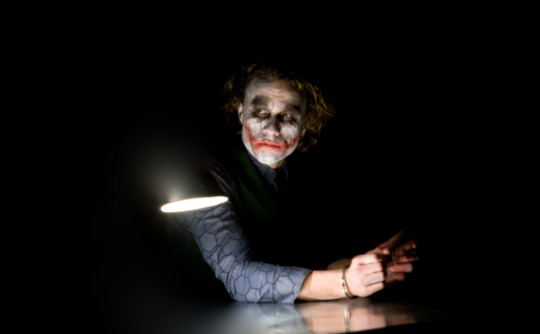
The Joker is the continuation of opposing forces attempting to infiltrate Bruce Wayne’s life & community (as would a specter in the shadows, a spider in the darkest reaches of lunacy; a.k.a. the absence of faith, the inversion of angels; i.e. Demons, Demonic Entities, Dark Deities, etc). The Joker represents everything evil in society - everything sick, everything sad, everything hurt. To The Joker (and the fools before him) - society is an infestation, a plague, a result of toxicity & corruption (especially the light of which darkness cannot fathom). Batman is the antithesis to Joker’s Chaos. Batman is the collective honor & balance of civility & justice & good faith quantified into one symbolic rogue.
Heath Ledger’s performance of Joker was nothing short of awe-inspiring artistry & workmanship (WorkPERSONship?). His passing was a needless tragedy and although his performance garnered him numerous accolades - I wish he did not have to die in order to attain it (It should have been him accepting the award - it should have been him). Without a doubt, an equal to Joaquin Phoenix’s performance (if not Superior) - I still acknowledge Heath Ledger’s ground-breaking performance as a perfect triumph of Acting (although I think the character is absolutely distorted on all accounts; despite Joker’s persuasive wit).
Many people like to compare Joaquin Phoenix & Heath Ledger’s performance(s) as The Joker (folks compare everything in life), and I think both performances stand strongly on equal ground. Total Perfection. No doubt about it - and one kinda goes with the other if you were to align the vision side-by-side. Of course I love me some Jack Nicholson in Tim Burton’s “Batman” - I think he gave an undeniably frightening & charismatic performance just as Ledger & Phoenix (proof of the character’s universal & artistic appeal). Although Heath Ledger’s performance shall always be praised as a definitive milestone in Acting on Film - I still think the character is a twisted f**k (pardon my American).
Not only does Joker attempt to destroy Bruce Wayne’s personal Faith, but also everyone he cares about in his life, and everyone in the entire city of Gotham, USA. The pitiful tragedy of Joker’s existence is the sad truth that he lacks good faith in not only himself, but the people of Gotham, and the one individual who is genuinely trying to make a good difference in the world: Bruce Wayne.
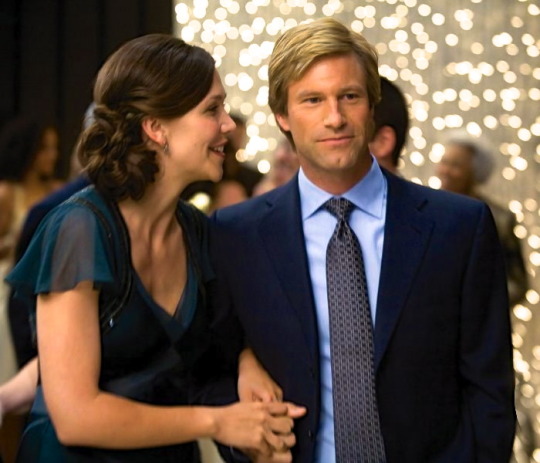
It is a tragedy & a disgrace to humankind that Rachel Dawes & Harvey Dent (played by the Always-Excellent Aaron Eckhart) died in vain (as Thomas & Martha before them). It’s a sin that the Joker did what he did to everyone in Gotham City. It’s unGodly that so many human beings had to lose their lives, needlessly, just because of one individual’s own loss of innocence, and more specific, his loss of personal faith in his life (and in the world, of which, we live). The reason why Joker is dangerous is because he is the quintessential ‘mass shooter.’ He is the terrorist. He is the result of a society that has forgotten him. He is the reason why so many people struggle & suffer in contemporary society - not because he caused it, but because he fed into it - preying on the life force of humanity & destroying the efforts of truly good people who kept striving to save the soul of humanity (within the framework of a struggling eco-system).
If Bruce Wayne did not have friends he would have been dead in the first act of the story - that is a fact. When Dr. Jonathan (Not ‘Frasier’) Crane (aka ‘The Scarecrow’) had attacked Batman (in ‘Begins’) with the weaponized hallucinogens, Bruce Wayne was almost killed. If it was not for Alfred Pennyworth & Lucius Fox, Bruce would have been dead in the streets of Gotham. The consistent importance of Friendship is quite evident when thinking of Bruce Wayne’s network of acquaintances (both in ‘high’ & ‘low’ places) in the city of Gotham. This also applies in the opposite, with Bruce becoming an important (and powerful) friend to certain individuals of Gotham City (in return).
Friendship is a universal quality of humanity that should be cherished & honored. Friendship, like everything, requires effort. Bruce Wayne’s life requires effort even though he is a “billionaire playboy” - he still has struggles just like anyone else, and he shares the struggle with his friends (since they became a sort of surrogate family; more like extended-family; legal & spiritual guardians). Bruce Wayne is a fictional example that no one is free from life’s struggle and life’s personal challenges & lessons (no matter the ‘advantages’ or ‘upbringing’). It’s a sign of brilliance on behalf of the conceptual team behind the vision of The Dark Knight Trilogy. I know a lot of people focus on the action sequences and the drama of the theatrical dance of Light & Dark play out on screen in the form of the Batman & the Joker, but beneath the surface is a sincere sociological & political commentary (and spiritual message).
The Light & The Dark (i.e. Positive & Negative, God & Lucifer, Heaven & Hell, Angels & Demons, the Good & the Bad vibes, The Upward Infinity & The Downward Spiral, etc, etc, etc): it is at the fundamental core of our collective balance of existence; Life as we know it to be. It is my humble understanding that the eternal balance is a necessary process, it requires effort on both sides. Both Light & Dark must cooperate to preserve the equinox-of-existence (just one person’s opinion based off of observation & objective analysis, take it or leave it).
The death of Bruce Wayne’s best friend, Rachel Dawes, was not only a tragedy in Bruce’s life, it was a tragedy for innocence. She was so angelic & kind & giving & honorable & brave - her Faith is what helped Bruce remember his childhood innocence (before he was robbed of said innocence), and her last words (which were concealed from Bruce due to desperate-times-call-for-desperate-measures; see Alfred Pennyworth), she continued to spread the message of Good Faith in Humanity despite the fact that she was needlessly murdered. A defining attribute of Rachel Dawes’ character is one-in-the-same as Martha and Thomas Wayne - the Belief & Faith in Humanity despite the monumental heartache & loss (and yes, trauma & death).
If one recalls the time in the first act when Alfred was bringing Bruce Wayne back from the mountains of Bhutan - Alfred briefly mentions how Bruce Wayne’s ancestors’ tireless efforts to keep their community alive (even at the worst of times) nearly made them bankrupt. It was their tireless dedication (their faith) that paved the way to set a foundation for future generations to prosper (while honoring the efforts of said ancestors). Although their example did not improve Gotham’s economic prosperity overnight, the murder of Martha & Thomas Wayne set the wealthy of Gotham into action (as the story goes).
Bruce Wayne comes from a long lineage of helpers. Helpful People who are Good. People who want to see the best results out of humanity’s efforts (as a whole). People who believe in the power of the individual, and the social end-result of one individual’s tireless faith (and life choices).
Although Bruce Wayne’s ancestors are not the focal point of Batman, they are his bloodline & family’s history which in it’s own right deserves to be honored & respected (I know this is a fictional character, but roll with me here, people HahaHA).
Yes, “The Dark Knight” consists of nothing short of complete Mayhem, and YES, The Joker may make ya pee a little bit (just a little), and maybe even laugh (the writing is pretty damn genius in my humble opinion). I acknowledge that “The Dark Knight” should have been nominated for Best Picture (Double that for “The Dark Knight Rises”), and I acknowledge that Christian Bale should have been nominated for Best Actor his final performance as Bruce Wayne/Batman (I think he was snubbed, but hey I’m not in the Academy, so what do I know, right? HahaHA).
Speaking of “The Dark Knight Rises”, I still believe it’s the best Batman movie of all time. I understand (and have heard) many folks say “The Dark Knight” was a better movie, however, I believe (on the contrary) that not only is the third act of Christopher Nolan’s masterpiece a testament of cinematic storytelling - it is a testament to just how AWESOME we are when we perform at our best. When we work together, we are at our best (as a country, and as a people).
“The Dark Knight Rises”, at it’s core, is a cyclical nod to everything that was established in the first act of the trilogy (a perfect Full Circle), and of course, is the conclusion of Batman. Every lesson in Bruce Wayne’s life, every struggle, every enemy, every friend - every aspect of Bruce Wayne’s life is interwoven with Gotham City (and the people of Gotham) as he & his friends defend Gotham City (and everyone in it). In “The Dark Knight Rises”, Bruce Wayne has become a Hermit; locked away, half man, half mythos, in an air of mystery & fascination (among the ones who still speak of the elusive figure; a fading memory of a silent guardian). And as a hermit, Bruce has become deeply reclusive due to the Joker’s killing spree in Gotham City nearly a decade prior (while exploiting the sick minds & lost souls who stand for nothing [and truly fall for anything]).
While an average person would possibly accept Bruce Wayne’s physically-defeated, emotionally-scarred, and spiritually-damaged condition - Alfred Pennyworth (God Bless ‘em) does what any individual of Good Faith would do - he encourages Bruce. He sees Bruce as a human being, not as a symbol. He cares about Bruce Wayne’s life, his well-being, his overall fulfillment, and Bruce’s personal happiness. He chose to honor the pact he made with Thomas Wayne to protect the family fortune (most importantly, Bruce). Alfred Pennyworth has his own fascinating & rich history from his own backstory (having been a soldier in his younger years). Fact of the matter is, Alfred never stopped being a soldier at heart. He is True Blue; a true man of the cause; a true Englishman, a true American, and overall a true HUMAN BEING. He is a True Believer of preserving all that is sacred & righteous in our world. He is a Saint and he is a blessing (in contrast to Ra’s al Ghul’s curse-like presence; working in Bad Faith; a destructive force; almost the polar opposite of Alfred).
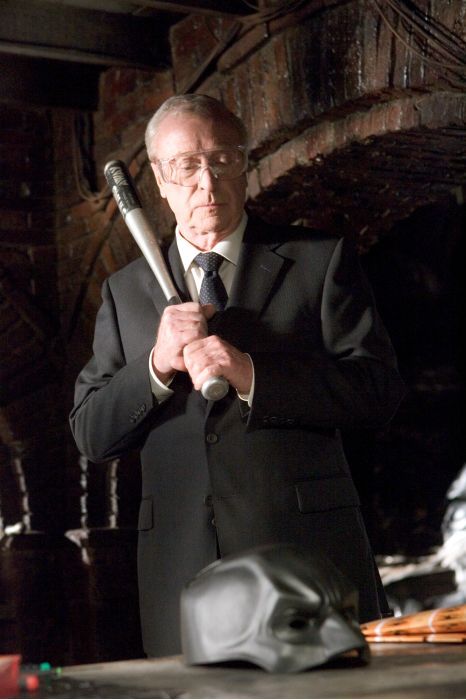
One thing I love about the final film in Nolan’s titanic, artistic, commercial, & cinematic effort is just how well the Production had managed to pull off the third act (having so many characters and SO much exposition) especially considering the factors that most wouldn’t even consider (i.e. Budget, Lights, Sound, Wardrobe, Set Design, making sure everyone’s hitting their marks, making sure all the stunt-work is safe, making sure it’s all coordinated to the “T” - the amount of brain-storming, conceptualization, the marketing, the pre-production, the principal photography, the post-production, etc etc etc). Movies that require so much of the cast & crew do not always work well, but Warner Bros. & Nolan’s Team somehow managed to actually pull it off. They did what no one else could do - they made Batman real. Christian Bale made Bruce Wayne real. He made Bruce Wayne truly Human (even if just for a moment).
In this day & age (with everything that just happened very recently in our very own United States of America) - one could find a jaw-dropping parallel to what happened when ‘Bane’ came to Gotham City (played ferociously by the envelope-pushing Tom Hardy; see “Bronson”, so gnarly) to what had happened to our own U.S. Capitol.
Bane is the darkness (cloaked with brute force) that feeds off of the fear of humanity. Bane is a product of The League of Shadows (with Hardy’s vocal performance being a nod to UK & Ireland Bare-Knuckle-Boxing Champion, Bartley “King of The Gypsies” Gorman), and was actually ex-communicated from the league (so the story goes) by Ra’s al Ghul (himself). Word around the campfire is that Bane is a force of nature (more destructive than known before) and will stop at nothing to ‘fulfill the destiny of Ra’s al Ghul.’ Bane is a result of fringe-Cult-Mind-Control-Indoctrination (a life devoid of pure faith & free-will entirely; typically due to some possible form of sincere trauma and/or loss and governing authority; aka The Darkness).
The legend of Bane is more rumor than fact. He is just as elusive as Batman, and just as evil as Joker (if not more). Bane’s physicality brings Bruce Wayne to his knees in the third act of Nolan’s 3-piece work-of-art, while also providing all of the intellectually-driven rationale (totally psychotic) behind his Madness & Apocalyptic ambitions. Bane is a real-life-threat to Bruce Wayne & Gotham City (and The American Way). Bane represents the overall threat to our way of life (as a humanity). Bane is everything wrong with world leaders & corrupt forces (cultivated into the most toxic physical form); like a deranged & disfigured Churchill who lumbers about (as a lion in a den) in the underground infrastructure of Gotham City’s sewage system (almost as a warped, drug-induced, Shakespearean Emperor). Bane is a deadly force of nature, fueled entirely by the sickness of bad faith; coerced into his own psychosis by probably the most complex & frightening character of the entire series - Talia al Ghul (a.k.a. ‘Miranda Tate’, played unnervingly-well by one Marion Cotillard [the child played by Joey King, respectively]; her performance sends chills up the spine upon numerous viewings).
While introducing Batman & Gotham’s new enemies, some of Bruce’s new friends in the final (and most epic) installment of Christopher Nolan’s Batman storyline are Officer [Robin] John Blake (played exceptionally by Joseph Gordon-Levitt) and a Wild-Card-Femme-Fatale character by the name of Selina Kyle (a.k.a. ‘Catwoman’, performed very well by Anne Hathaway). Joseph Gordon-Levitt shines as young Patrol Officer Blake - also having been an orphan, like Bruce Wayne, and a true believer in the purpose of Bruce Wayne (Batman) in Gotham City. Unlike Bruce, however, Robin is not a billionaire & Robin was not born into a life of privilege. Despite his brief backstory, Robin Blake, like Bruce Wayne, has Faith in Humanity. It’s why he puts on the uniform (speculative subtext). He does not have the luxury to become Batman, so just as Jim Gordon does - He works with what is given to him. He applies himself within the structure already established within Gotham (despite the restrictions & limitations of said structures of society). He, like ‘Serpico’ before him (see Al Pacino) is a regular Cop who just wants to do what the Law is supposed to do: To Protect & To Serve the good people of Gotham City.
Selina Kyle, on the other hand, is on a path between The Light & The Dark (on a sort of ‘spiritual tight-rope’ between the two paths). Selina’s life path is one of constant survival and constant running. As a ‘Cat Burglar’, Selina Kyle is a flat-out Crook. Her tough exterior conceals what truly is underneath her mask - a person who, too, has faith in humanity (proof that the ones who wander are not lost). Unfortunately for Bruce Wayne, as previously-mentioned, ‘Desperate Times Call For Desperate Measures’ - and Selina Kyle’s desperation put Bruce directly into the hands of Bane & The League of Shadows (at a truly disturbing moment in the film). While forces of The League of Shadows’ (combined with a few of Wayne Enterprises’ own ‘bad seeds’, i.e. Daggett, Stryver, etc) disseminate chaos throughout the plot of “The Dark Knight Rises” (by destroying the city of Gotham and exiling Bruce Wayne across the world into a pit of hell) - all of the friends Bruce Wayne has made start to band together to organize a resistance with the surviving members of local (and once-established) authorities. The honor, the people, the community of Gotham City, and the overall driving spirit - the collective faith of the city (as a whole) had been damn-near destroyed entirely in this film. The resistance was born from those of whom are still faithful to their city and the rights of every individual who resides within.
Between the clandestine operations of Robin & his fellow law enforcement officers (all trapped underneath Gotham due to The League’s devastating terrorist attack), the United States Federal Government (and necessary agencies) & Wayne Enterprises (with ‘Miranda Tate’, Lucius Fox, etc), and the awe-inspiring action-sequences in this grand finale - there is no denial that the final installment of The Dark Knight Trilogy is the most realistic & visceral revolutionary epic set in modern-day America. It’s funny when one stops to think that this was all originally based off of a comic book character published by Detective Comics in the late 1930’s. It’s astonishing to think of just how far this fantasy story has evolved throughout the years.
Bruce Wayne is more than a comic book character. Bruce Wayne is a symbol of humanity. That is his ‘superpower’ - his Humanity. He is more than just a person fighting crime to honor his family’s faith & heritage - he is honoring the faith of humanity as it stands today. After all of the corruption & loss & trauma - Bruce Wayne never lost faith in what we have in life (even after losing so many loved ones and frequently having his own life in harm’s way). As he strives to defeat the darkness of Gotham (by striking fear into the hearts of those who prey upon the fearful), the force of darkness continues to rise to attempt to destroy & defeat The Light (Futility at it’s finest).
The greatest villain of all, Batman’s most incredible threat throughout the entire trilogy is actually Talia Al Ghul (Ra’s al Ghul’s daughter & heir to The League of Shadows; the true leader of the cult). She is the one who almost destroys Gotham City (if it wasn’t for Bruce Wayne and everyone who stepped up to do what was right to defend the city).
Although Talia does not fight Batman physically - she is the only villain who ever slept with Batman & exploited him with complete intimacy (seducing Bruce Wayne in a seemingly romantic moment in the film). Talia (still known as “Miranda” by this point in the story), appears innocent & sweet upon first glance, however with multiple viewings of the film, one begins to understand the disturbing nature of what Miranda/Talia is and is Not saying in Bruce Wayne’s presence (a brief glimmer of her spiritual void). Talia al Ghul truly is Ra’s al Ghul’s daughter and her light has been completely stamped out by the fact that she, not Bane, was the one who came out from the pit of hell (as it is revealed in the climax of this epic conclusion). The Devil lurks in many forms - in this particular case, Talia al Ghul displays the darkness as it exists in feminine form. Marion Cotillard was the most over-looked performance of the series (in my personal opinion) and I think as much as Tom Hardy does not get enough credit for his, at times, somewhat Macbethian performance (albeit not as flamboyant as Joker, but even more deadly) - I believe Talia al Ghul is the greatest threat to Gotham City in this trilogy (sorry, fellas).
While magnifying the character of Talia al Ghul, one must acknowledge her natural ability to be a ‘Wolf-in-Sheep’s-Clothing.’ She is the deadliest threat to Humanity due to her belief in a necessary demise of Gotham (seeing Gotham City as a hotbed of hypocrisy & imperialism). Talia al Ghul has no problem burning the barrel over a few bad apples (if that makes sense). While Talia is the CEO of Wayne Enterprises, she was also simultaneously dictating every strategy for The League of Shadows behind closed doors. She is the ‘Queen’, ‘The Head of The Serpent’, The Leader of ‘The Hive.’ She is the quintessential ‘Wicked Witch’, The ‘Bad Girl’, the ‘Goddess’, Kali, Baphomet, etc etc etc). She is an individual, born into a pit of darkness, and exposed to a potentially-life-shattering amount of trauma (based off of the staggering display of complete psychosis; albeit tremendously stealthy & downplayed under her facade of congeniality).

Talia al Ghul is the mastermind who inherited the crown from Ra’s al Ghul’s ‘throne’ (if that makes sense). She is a product of trauma, suffering, & loneliness, but more importantly, a severely sick individual who needs some serious mental & emotional help (more than Joker & Harley Quinn combined) and is the deadliest foe of all (due to her intellect & internalized rage & female fury & her knowledge of all things Gotham & Bruce Wayne/Batman). Talia al Ghul, like Batman, is a force of nature; especially due to her complete cutthroat tactics and inversion of personal Faith in Humanity. Talia al Ghul initially comes across as a meek & angelic person, responsible for the credibility & success of Wayne Enterprises. Her entire life, however, has been dedicated towards the infiltration of Gotham City, USA, and she is the only character in the film who is truly superior to Bruce Wayne in terms of sheer will-power (He caught up to her in the end though). What saves Bruce Wayne is his network of friends (Alfred, Jim Gordon, Lucius, Robin, Selina, etc), in addition to his mind, body, & spirit (once they attain alignment).
I don’t know what others have said, but I think Robin & Catwoman were actually done brilliantly in “The Dark Knight Rises.” Robin was a pleasant surprise for me as a viewer (truth be told; although I thought Ryan Gosling (GOS!) would have made an amazing Robin in ‘The Dark Knight Rises’; much respect for Joseph Gordon-Levitt), and Selina Kyle/Catwoman is fascinating due to her being the wild card of the last film (that truly helped level the playing-field; Girl-Power).
Catwoman, unlike Batman & Robin, is a big question mark throughout the majority of the last film. Her presence is just as elusive & threatening as Talia’s, however, Catwoman (unlike Talia al Ghul), underneath it all, is a Good Person trapped in a bad situation. That is a common thread in this storyline - Good people being in bad places (i.e. Jim Gordon, Lucius Fox, Rachel Dawes, Harvey Dent, etc). On the flip side of the coin - there are plenty of bad folks in good places amidst Gotham’s corrupt forces (i.e. Dr. Crane/Scarecrow, Carmine Falcone, Judge Faden, Detective Ramirez, Detective Wuertz, etc). It’s a reality known all too well in our modern society.
When one observes the overall arc of Bruce Wayne’s transformational life experiences in Nolan’s Comic Book Epic - I have to reiterate the notion of duality consistently interwoven within each one of these films. Light & Dark - Good & Evil - Positive & Negative - the eternal dance - it is the driving force of this franchise (as Bruce is the quintessential “Light Worker” - not that I’m soliciting ‘New Age’ [or ‘Old Age’ for that matter] ideologies, just a matter-of-saying). Bruce Wayne symbolizes The Light of God found in human form (at the very core and most-primary form of what Natives call, “The Great Spirit”, respectively), of which must seize the day to tame the night. Bruce is the epitome of a Capricorn/Aquarius cusp (Western Astrology/Zodiac) - in full force - bringing the water to those who are thirsty, bringing food to those who are starving, and healing the suffering of a people by means of very serious mental, physical, and Yes, Spiritual Work & Seriously Visionary Goals. Bruce Wayne is the Light while Bane is the Darkness of Humanity (the brute force, the inversion of light); the absence of faith. Although he does indeed have an inherent belief within his bones (and muscles reminiscent of mountains), Bane is still dependent on man-made ideologies & approaches (entirely based in the material world). The League of Shadows are attempting to summon the fires from hell in order to bring the dark prince into Heaven to seize the light (again, futility) to fulfill the devil’s ultimate lie (talk about a God-Complex..Oh me, Oh my) of Superiority (‘Can’t we all just get along?’).
When examining Talia al Ghul’s presence as a double-agent mastermind - her reveal is one of the most important plot twists of the series. Talia being a hidden “mole” within the resistance of Gotham City during The League of Shadows’ Hostile Takeover sets off Martial Law in Gotham - which sparks an uprising in the city that eventually saves Gotham (due to the efforts of a network of people who utilized adaptability & effective methods of coordination & action). Bane is to Batman as Talia is to Catwoman (just as Harvey is to Rachel; Duality; Gemini, Twins). What’s so incredible about Selina Kyle is her purpose in the story as a symbol that people CAN & DO redeem themselves despite having a checkered past (something a good amount of folks have in this day-and-age, myself included). Although the clandestine efforts of Gotham’s resistance had been futile due to the fact that Talia al Ghul was hiding in plain sight (a stroke of genius on the writing), Selina Kyle was the defining individual that tipped the scale in favor for Gotham City (and more importantly, Humanity as a Whole). She had an opportunity to leave Gotham and have a clean slate, but she had a personal moment-of-crisis... That’s because she has a soul, and in her soul, she knows, by faith & intuition, that humanity needed her help (one could speculate). She went back & risked her life (God bless her), which was a full circle nod, of which, echoed the sentiment originally planted within the first film: The moment when Rachel Dawes asked a younger Bruce Wayne, “..What chance does Gotham have if the good people do nothing?” (Edmund Burke; ‘Thoughts on the Cause of the Present Discontents’ [1770], regarding the nepotism of a monarchy).
Talia al Ghul is a highly-complex character (next to Bruce Wayne) in the series due to the potential life she may have lead as an orphan born in the pit of hell (shot in the jaw-dropping landscape of Jodhpur, Rajasthan, India). She is also the most tragic due to the fact that she literally has an opportunity to leave her life of pain & suffering behind to be with Bruce Wayne, but succumbs to the ‘Shadow Side.’ ...You know something is ‘rotten in the state of Denmark’ when she would rather destroy the world than have a ‘happily ever after’ with Bruce Wayne. Her spirit fell back into the proverbial pit of despair & darkness (without ‘The Light’) that she had escaped from (in a metaphoric sense). Bane, like Scarecrow before him, is merely a pawn in the worldwide game of Chess (‘all the world is a stage...’). The tragedy of Talia is that she is someone who was born into darkness and literally had to pay for the sins of her father (as her mother did, tragically).
Talia al Ghul is the most heart-breaking villain of the trilogy simply due to her life being a complete tragedy. One begins to ponder if she had a romantic evening with Bruce Wayne simply because she had felt the cold winter of loneliness for too long, or if she desperately (just for a moment) wanted to be one with God’s Light & a person’s gentle embrace (although I don’t know I might be wrong - she was probably like “Hey, it’s either Scary-Ass Bane or six-pack abs Bruce Wayne. HMMM. Let’s tip the scale on that one - HAhaHa, I digress). Regardless of reasoning - Talia al Ghul’s complexity is probably no match for the intense unhappiness she carries with her. It’s no surprise due to the fact that her mother’s absolutely unGodly demise (so sad) was the catalyst that sparked her mission from Hell (with her hound-of-hell on a leash, aka Bane). As much as I may condemn Talia al Ghul & Bane - I want to reason with them. I want to listen to them and I want to let them know that America is not a bad place, and we are not a bad people. I want to find a common ground, and extend the olive branch (as the saying goes) in order to help heal their pain & misconceptions of Americans and Humanity (as a whole), without having to give my (or anyone else’s) life in the process.
I have a belief that if Talia al Ghul was given a fair & ample opportunity to have a better life in America - she would have taken it (if she had not been so deeply-programmed with hate). I have the understanding & more concrete belief that it is due to her life-long journey of trauma-based-indoctrination as the main culprit as to why she simply won’t cease & desist from committing further acts of wrath upon Humanity. Talia al Ghul could have put just as much effort into the healing as the killing (but she fell back into that spiritual pit). I know why she hates. She hates because she weeps, deep down inside in her soul at night (when no one is around), for her trauma & her unbearable internal pain. She hates because she is repeating the pattern of trauma that may or may not have been applied to her mind, body, and worst of all - her soul. She hates because she had hatred put into her (since being a small, innocent child) and she put that hatred out into the world (a severe lack of comfort, love, care, family, and yes - Faith). Although symbols of lightness, darkness, duality, and representations of sins & faith are all spread across this monumental achievement in film (without having to shove a Cross in someone’s face) - at the very core of this film is, again, the importance of faith in humanity despite our individual & collective tragedies (and shared injustice). The importance of striving, no matter the odds, no matter the pain, no matter how dark the night.
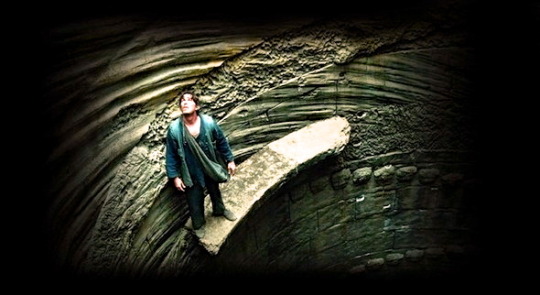
I believe the BEST moment in the entire story was the moment Bruce Wayne climbed out of the pit to save his people. He could have easily died a painful & shameful death in that ancient prison (while watching his city & country being destroyed by an insane fringe cult; a militia of madness; a false liberation). A lot of people seem to overlook just how incredible & truly powerful that moment is in “The Dark Knight Rises.” Tom Conti (a perfect performance of an apathetic mentor-like figure; complimented brilliantly by one Uri Gavriel as the exiled Medical Doctor of a Monarch) & Christian Bale’s overall dynamic in the entire pit sequence was a masterful stroke of storytelling (tying back to the first film, putting Bruce Wayne back where he first began). It’s fascinating to find Bruce Wayne, with a severely-injured body, having to rebuild himself and strengthening his spirit to rise out of the pit of despair - the pit of personal hell, the unforgiving pit of Time (Capricorn; Saturn; Kronos; “The Task-Master”, “The Reaper”; Reward or Punishment; Karma; The Lord of The Rings). The moment of truth comes when Bruce Wayne discovers (through numerous attempts) that it is his spirit that must rise to seize the light - without vanity, without any fancy gadgets, technology, tricks up his sleeve, or any clever contraption (or vehicle) to assist him in the process. This was a moment for Bruce Wayne and Bruce Wayne alone. This is what we call our moment to “Shine” as an individual being... our independent spirit. Bruce Wayne had to learn what it meant to climb out of the pit of hell and abandon his fear (as the child in the legend had done; Talia al Ghul).
The pit can represent many things to many different people. The eye of the beholder truly does apply to this (as well as any) story. For the individual to think & feel for one’s self - and to also believe in one’s self. The pit can be a literal prison - or it could be a wealthy kingdom. I know (from personal experience) the feeling of being at the pit of one’s own existence. I know what it means to be a prisoner trapped in one’s own body (due to unwanted pain & suffering & hidden trauma). I’ve learned the plight of humanity and the experience of suffering in the night (I’m just like everybody else). I have been there. I have known the darkness. I have known what it means to “dance with the devil under the pale moonlight” (as the expression goes). I’ve known what it means to defend the innocent from evil, thrusting myself into danger to save family members from toxic masculinity & extreme violence (since being a little boy). I have known the darkness, which is why I kept searching for my own personal truths & answers (which ended the day I had a near-death experience & literally saw The Light of God; 100% Serious). I have known all of these things, but I also know that the people who put that hurt into me had that same hurt (if not worse) put into them... That’s the paradox of trauma. The original source goes so far back it’s pointless to trace - which is why I look FORWARD in Life. I no longer dwell in the weight of one’s misery & spiritual darkness - I seize the light by choosing a good life (to fulfill my own purpose).
At the risk of my own humiliation & embarrassment (and at the delight of those of whom feel actual glee out of my personal struggles & suffering; God knows who you are), I can acknowledge that I am someone who has lived “in the darkness” before. I have known what it means to suffer and toil without the light of God in my life. I have abandoned my own belief in God before, and my own personal Faith before... it’s not something I am particularly proud of, and although I have survived various life experiences that made me plunge into the pessimistic side of life (having been mentally, physically, and yes - Sexually-Abused in my early childhood) - I reach out (in spirit) to anyone who may be reading my words, who has possibly fallen from the good grace of God (especially due to what has happened in our country). I, too, know what it is to lose faith in God & The True Light (as opposed to the Man-Made light). I know what it’s like to suffer & hate “The Believers” (my trauma came from a so-called “believer”).
You know, stories are more powerful than one may ever think (as well as Family, Friendship, Fun, and Faith). I have lived in my own personal hell before - I have ‘had it all’ and then lost EVERYTHING the following year. I have rebuilt my life SO many times (too many damn times), and I’ve learned one ultimate truth that I MUST share with everyone who is (and will be) alive to read these words...
..There IS A GOD. THERE IS A LIGHT. It may not be visible because we cannot see what lies beyond the veil of existence, but I assure you - Everyone is Alive for a REASON (and Individual Purpose). Women may have the divine gift of giving Life (RESPECT!), but we ALL have the gift of giving LIGHT (each in our own unique way). We all have a way to help heal and put something good into the world, despite our shared pain & trauma, as a people. We all deserve to be happy and have a decent opportunity for a healthy & happy existence (ESPECIALLY with our modern-day world; unless if folks start committing crimes and harming others and whatnot). I believe we are all at our best when we cooperate & coexist with one another (despite our individual differences). The Light does not need to shine out The Darkness just as The Darkness shall never overthrow The Light. We can live in a spiritual Harmony. We do not have to walk the same path. We do not have to share the same spiritual beliefs. I just think we CAN share this world (as I believe we are truly alive in what is known as the Garden of Eden).
We do not have to destroy ourselves to prosper. We can live among one another (with dignity & respect & honor). I’m not always happy to see that people willingly practice certain principles & “values”, but who am I to judge? That’s why God is here... It’s a tough lesson to accept, but it’s true. I should not judge someone just because they worship darkness - because at the end of the day that’s between them and their purpose in life - not mine. I have walked the line, but I never learned from others shouting in my face - I learned from listening & civility & patience & yes - Faith. That’s the purpose of the light - not to drown out the dark, but to work together (as Santa Clause & Krampus do), as a balance of necessary elements that will always be present in our own reality. We, as a contemporary society, have lost touch with the natural way of the world (well, a good amount of folks anyhow). We, as a humanity, have become so vain that we do not even know which way is Up & Down anymore - which way is truly Left & Right. We, as the soul of humanity, have suffered in the darkness for far too long (due to those who wish to control our individual light). We, as a country, MUST help one another climb out of our collective pit of despair - our sociological prison (cultivated through the last aeon), our ‘darkness.’ It has happened before and it can happen again - and to all of my fellow beings of whom shall always carry within us, The Light of Goodness, the love of God, and the wisdom of The Light - I say to thee: RISE.
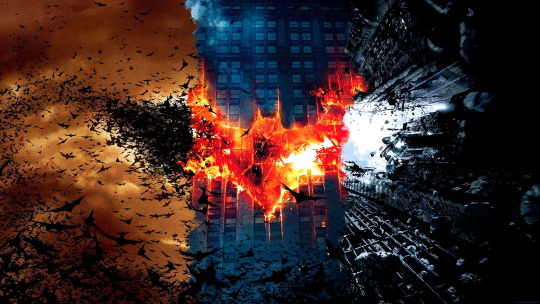
I give Christopher Nolan’s Dark Knight Trilogy a PERFECT 10 out of 10! The most inspiring superhero franchise of all time (in my opinion). Bruce Wayne & Gotham City show us that Chivalry is NOT dead in The United States of America (despite our challenges). Christopher Nolan’s Cinematic Achievement is victorious in it’s final conclusion: Gotham City IS worth Saving, as our very own Humanity - and Yes - We can all have a better way of life without having to sacrifice our own lives in the process. We can rise to fulfill our individual & collective destiny (as decent human beings) and have, not the life we need, but the one we DESERVE.
*This is dedicated in loving memory to everyone who has lived & died in service of The Light..✝️
“I see a beautiful city... and a brilliant people, rising from this abyss... I see the lives, for which I lay down my life: peaceful, useful, prosperous, and happy... I see that I hold a sanctuary in their hearts, and in the hearts of their descendents (generations hence)... It is a far, far better thing that I do, than I have ever done; it is a far, far better rest that I go to, than I have ever known...”
#WhyWeRISE#AMeditationOnHumanity#WhyWeRiseAMeditationOnHumanity#Humanity#Faith#Harmony#Movies#Batman#GothamCity#ChristopherNolan#ChristianBale#MichaelCaine#GaryOldman#KatieHolmes#MaggieGyllenhaal#MorganFreeman#CillianMurphy#HeathLedger#AaronEckhart#LiamNeeson#TomHardy#MarionCotillard#AnneHathaway#JosephGordonLevitt#BatmanBegins#TheDarkKnight#TheDarkKnightRises#USA#AdamWekarski#ATOMIK1
4 notes
·
View notes